
upload photo | donate | calendar
 |
my profile |
register |
faq |
search upload photo | donate | calendar |
|
|
#1 |
|
User
Join Date: Oct 2007
Location: Maryland
Posts: 365
Thanks: 48
Thanked 136 Times in 60 Posts
|
For whatever reason, I've never had much interest in French firearms; probably because most of them are in unique calibers. But two have always interested me, the FAMAS and the PA15. I've accepted that I'll never be able to spend the dough on a FAMAS but I have been on the lookout for a PA15 for many years. I've found them for sale here and there but I've never been able to find one just the way I want it.....until recently. In fact, it was better then I had expected to find; so much so that I'll probably never shoot it because I don't think it has been since it left the factory. I like this pistol because of the rotating barrel and the fact that it was the first to hold more rounds than the High Power, marking the start of the era of 15 round magazines. Partly, I'm posting this simply to show it off. It took a long time to find and it looks so nice I want to share it. But mostly, I'm posting it because, while the are lots of pictures of the PA15 online, there aren't a lot showing some of the details I wondered about. So let's see what we've got.
First off is the box: 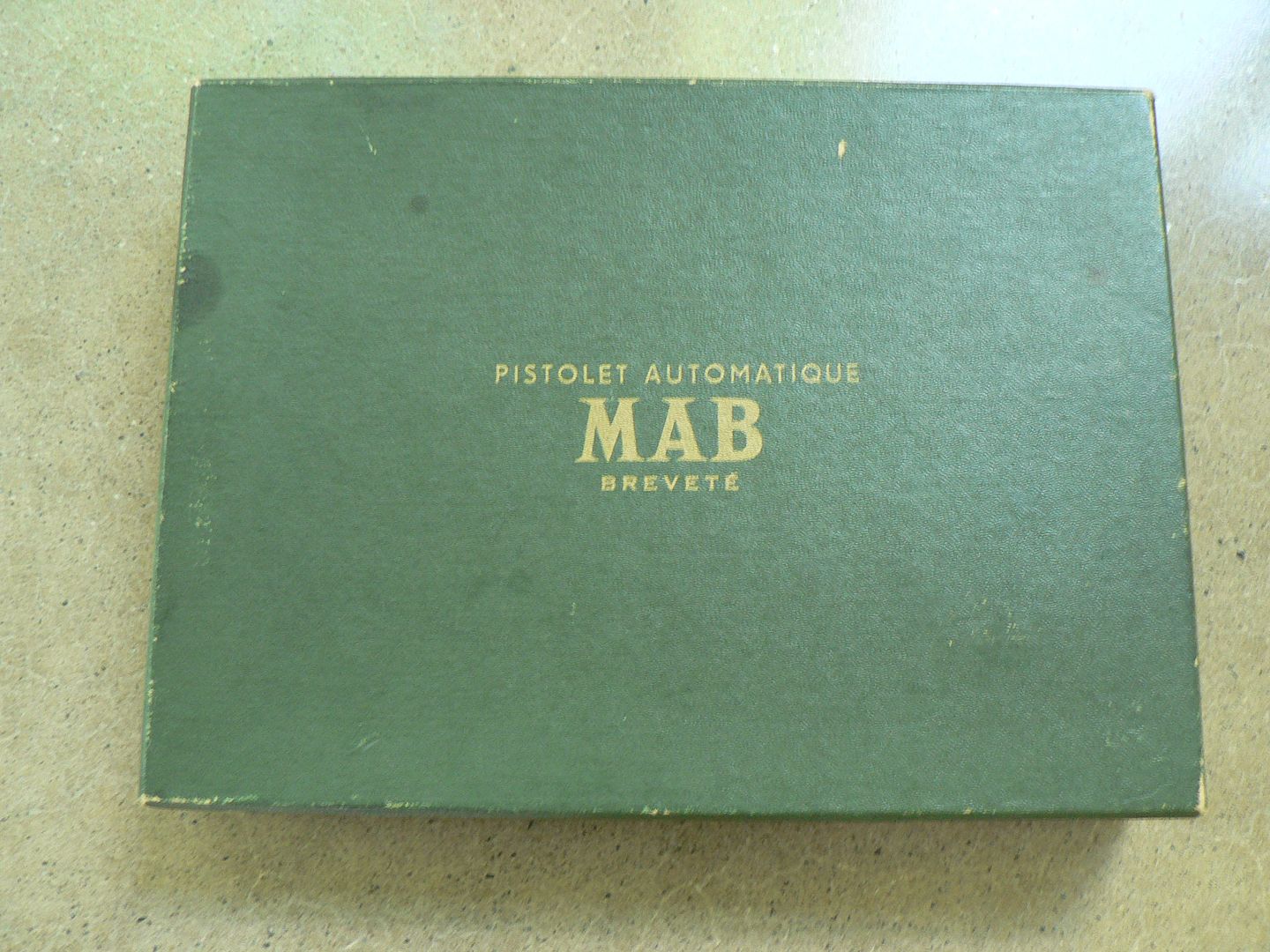 It's not in the best of shape but it's not in bad shape either. There is something nice about these old cardboard boxes. They aren't as sturdy as the plastic cases so common nowadays but they have a certain elegance and civility about them. You could leave it on a shelf in your den and it wouldn't look the even the slightest bit out of place. On the bottom of the box is a sticker bearing the pistol's serial number: 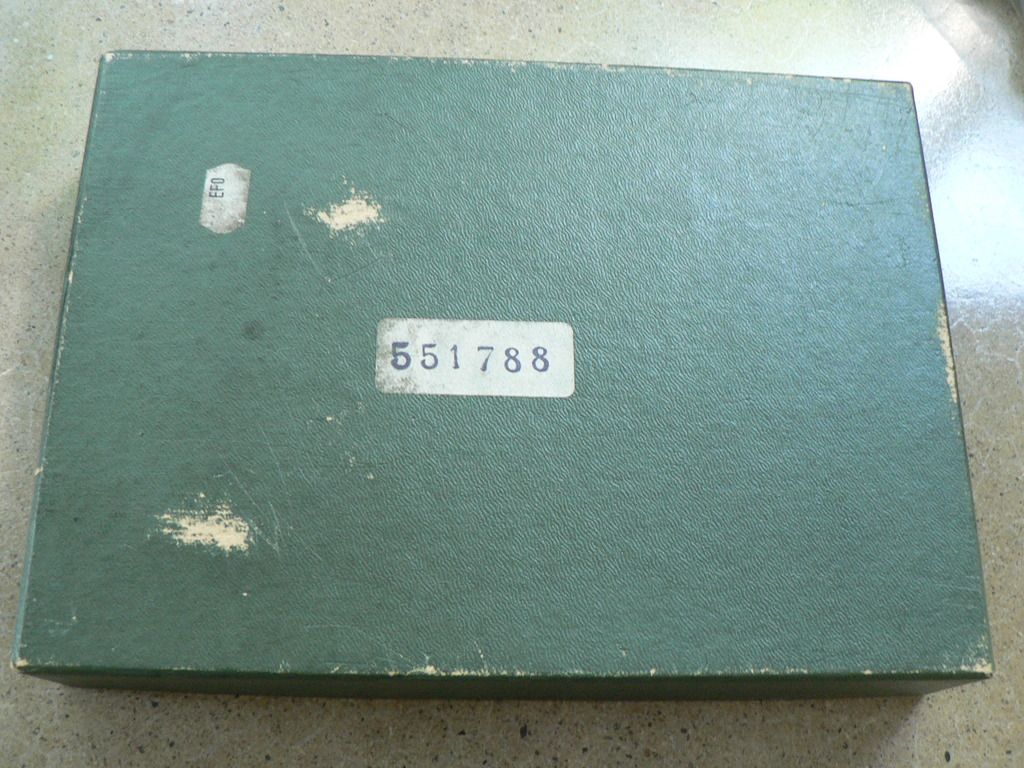 Open it up and we start to get into the good stuff:  I really think the plastic bags are factory. The spare magazine is still covered in a thin film of cosmoline and there are no grease marks anywhere on the cardboard inside the box. I don't really see a reason to remove the magazine from the bag. Maybe it never has been. Also seen is the cheepie cleaning brush that all pistols seem to come with. Does anyone really use those things? In the lower left of the picture is the inspection certificate. It basically states that the pistol has past all necessary tests and is approved for sale. Next to that is the "manual". I place that in quotes because it is really more of a catalog than anything else. It shows all of the pistols that MAB sold at the time and it tells you how to use the sights and some good safety practices but nowhere does it actually tell you how to operate the pistol or disassemble it. The closest you get is an exploded view drawing. There is no paperwork missing, that's just all there is. It's French. I think that the pistols imported by Howco had a manual that was written here and inserted into the box but this one was made for domestic consumption (or at most continental Europe) so it lacks the Howco import stamp and the "Made in France" rollmark. I won't bore you with all of them but let's take a look at some of the manual/catalog pages. Page two says that MAB is presenting a new 9MM pistol in both 8 and 15 round capacities. They are the same pistol except that one has a thinner grip with a single stack 8 round magazine: 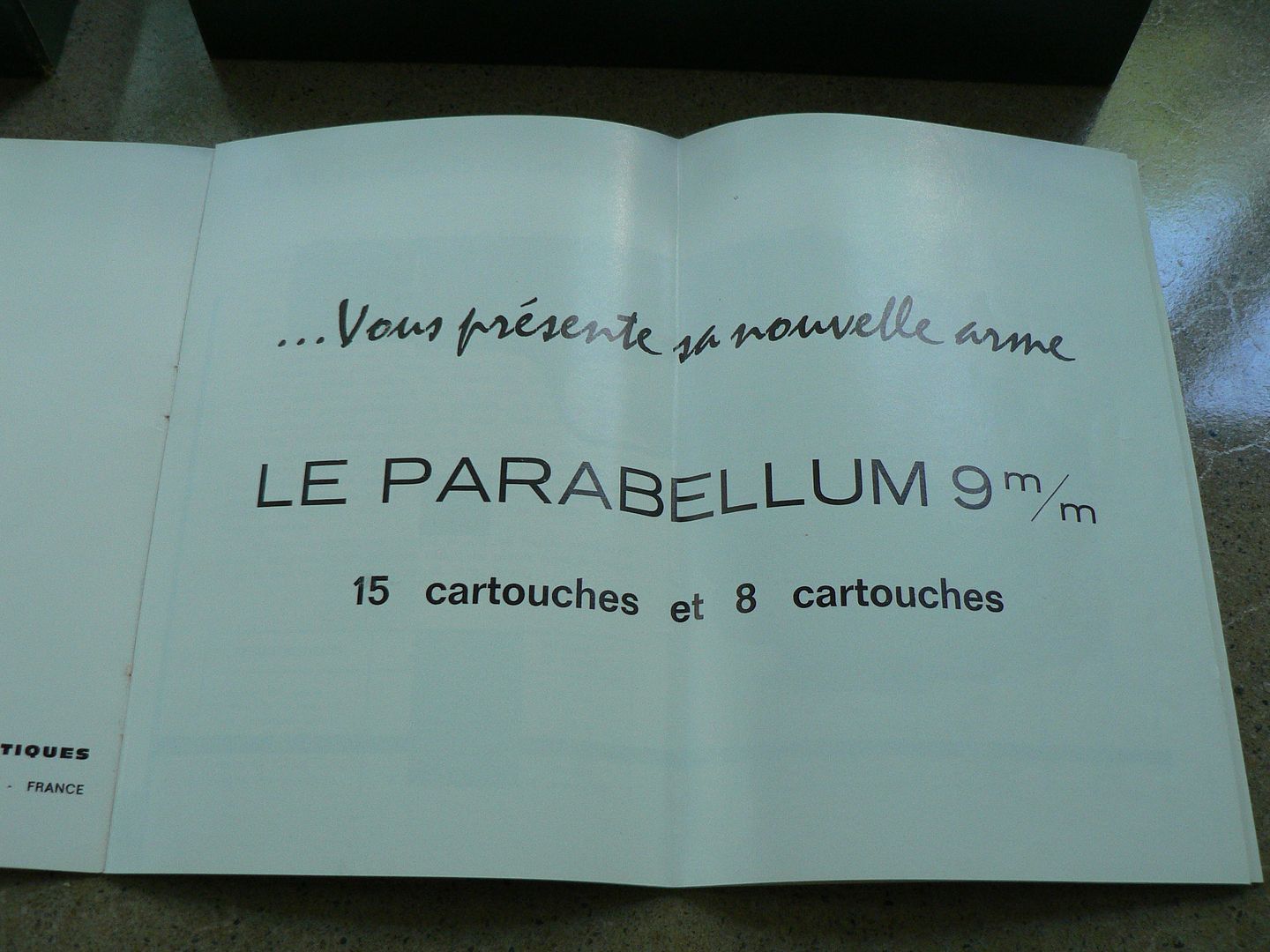 A little farther in and you find an introduction to the P8 and P15 pistols along with some statistics about them: 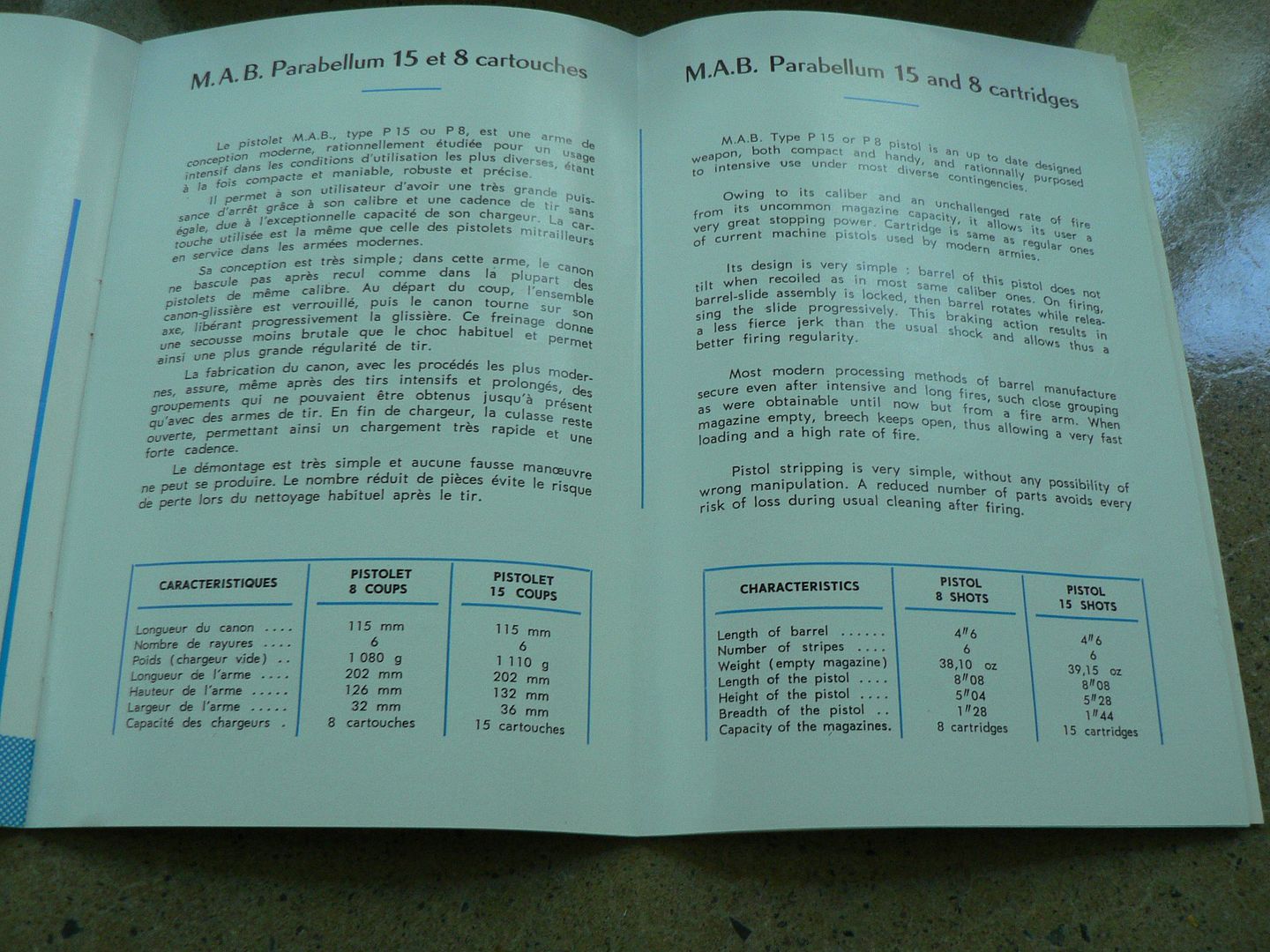 This is the closest they're going to give you with regards to disassembly: 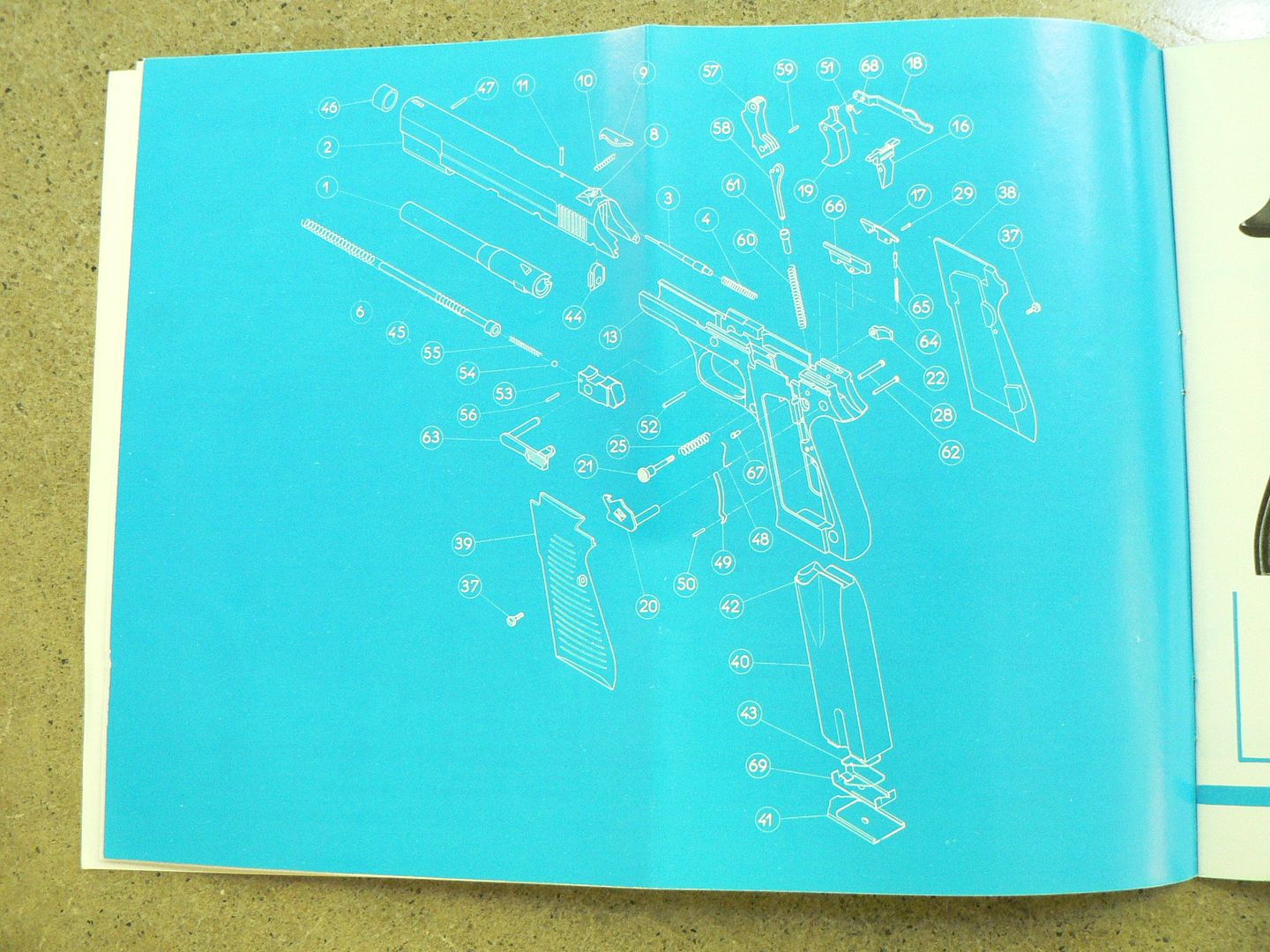 At least they give you a pretty picture and an index of parts shown in the exploded drawing: 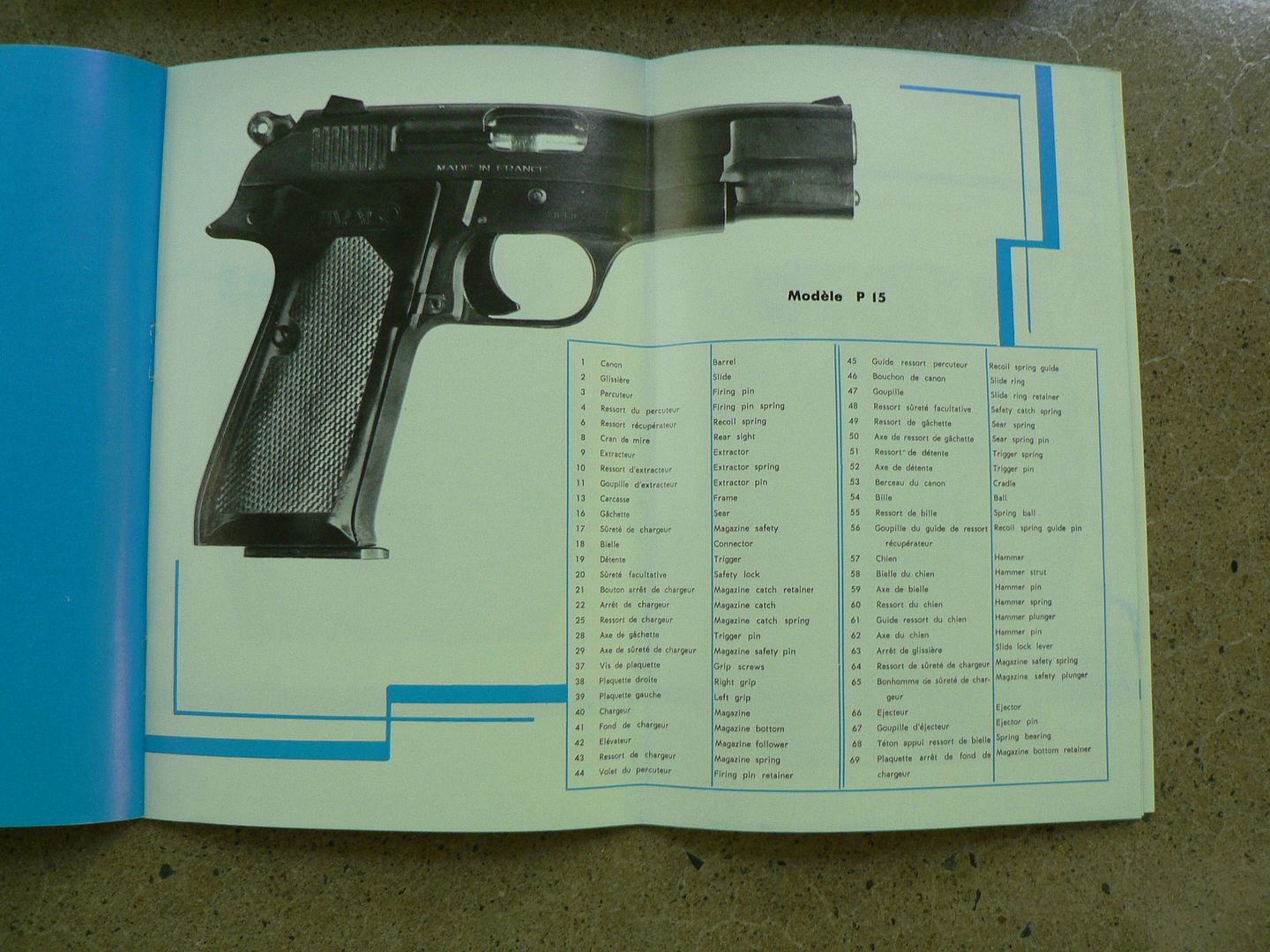 Skipping past the pages showing holster options and other models (P8, Model D, Model A and*Model R22) we get to sight usage diagrams:  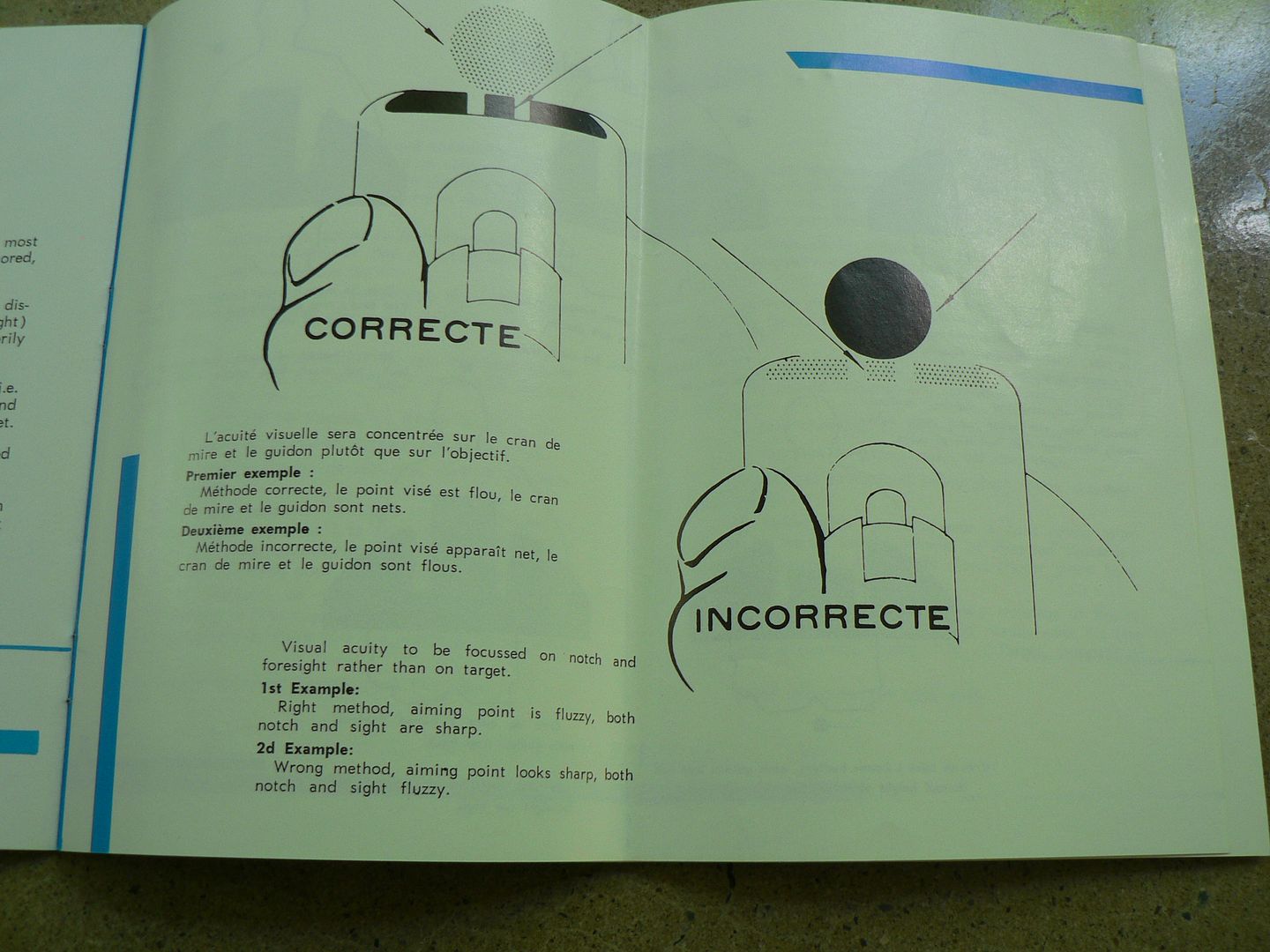 Skipping over safety information we get to the end of the book finishing with a drawing of the factory: 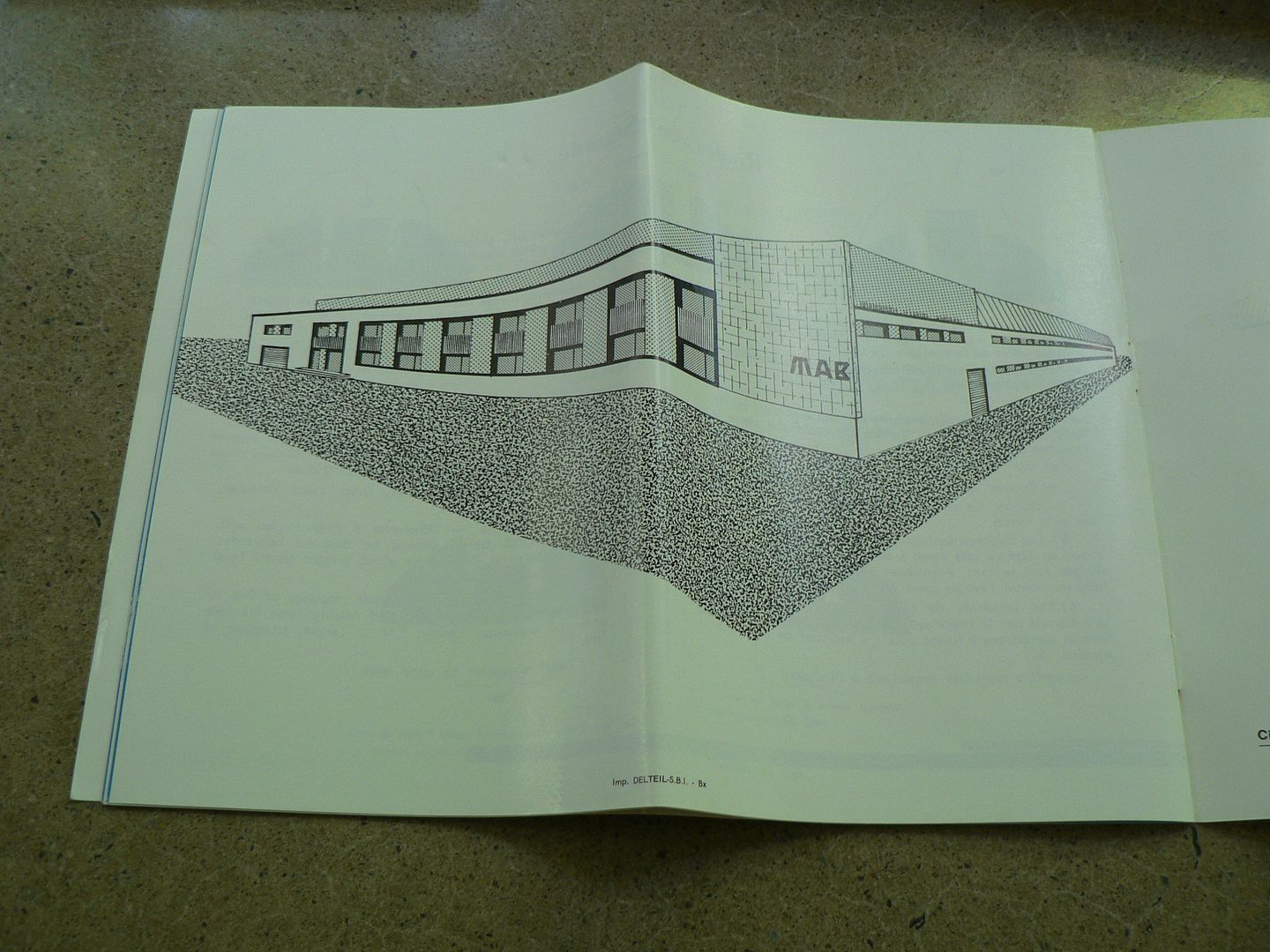 Last up is the rear cover showing it in your hand and ready to go now that you have been properly informed as to*the pistol's functions.....HA!: 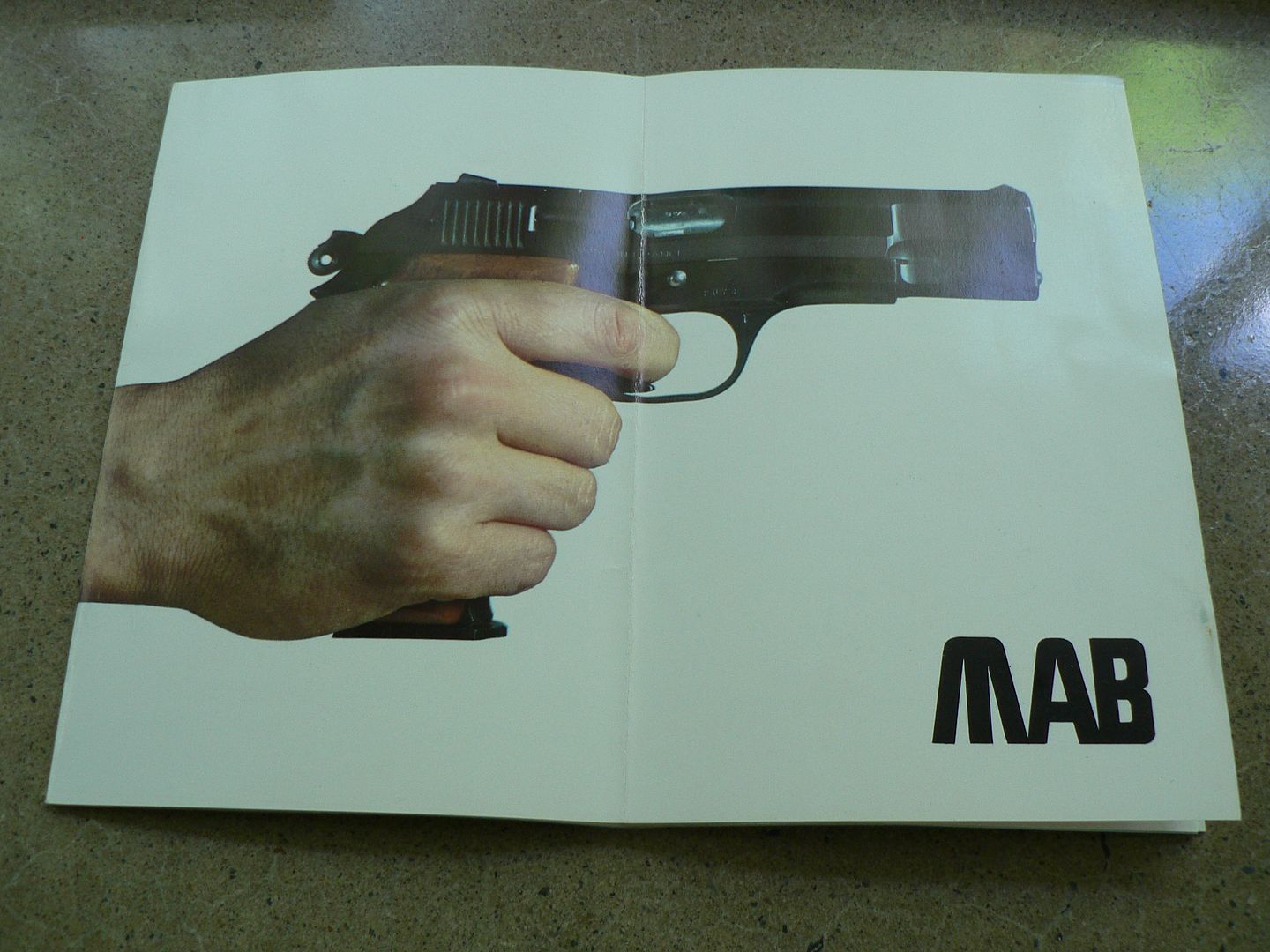 Alright already.....get it out of the bag: 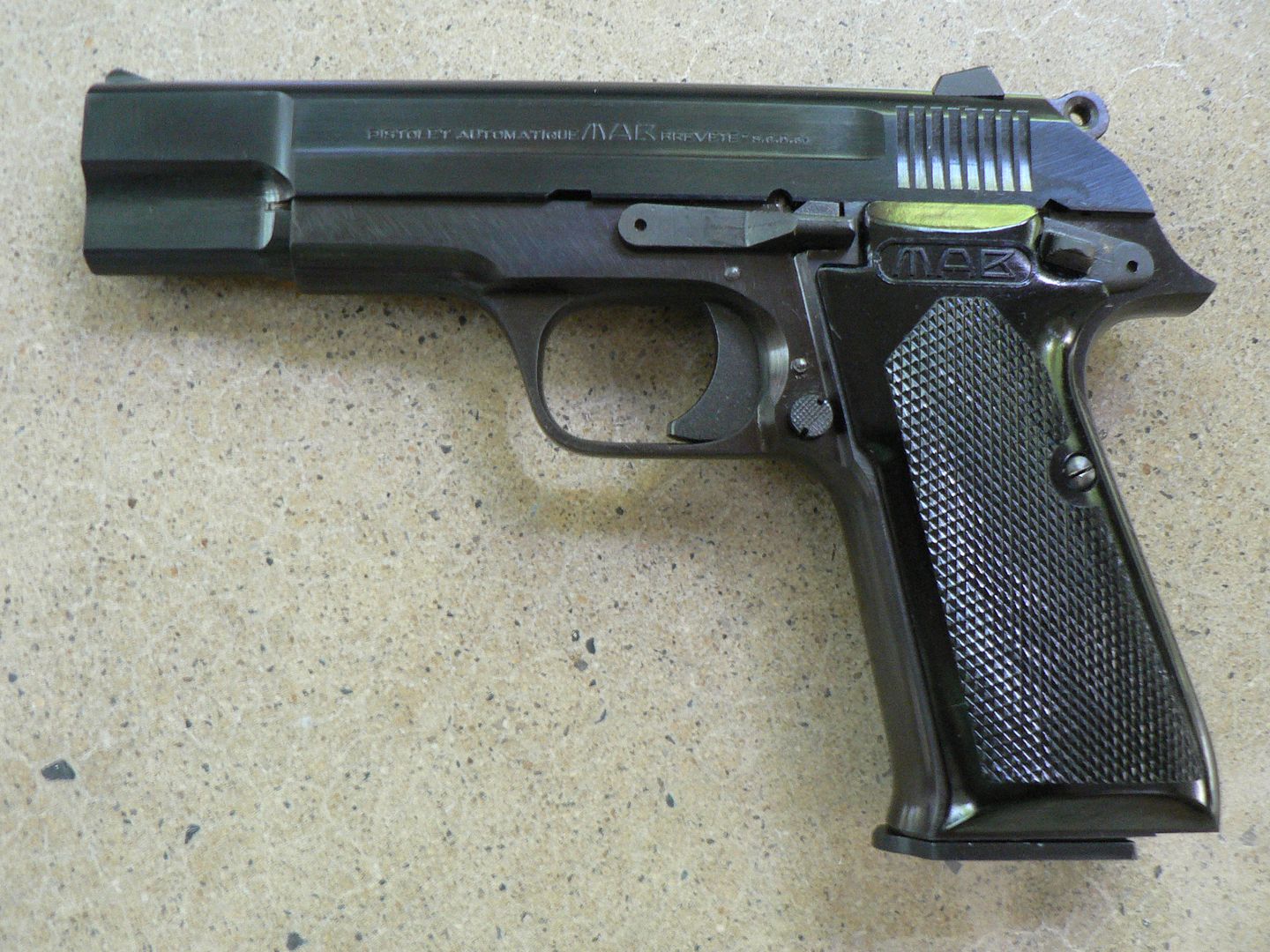 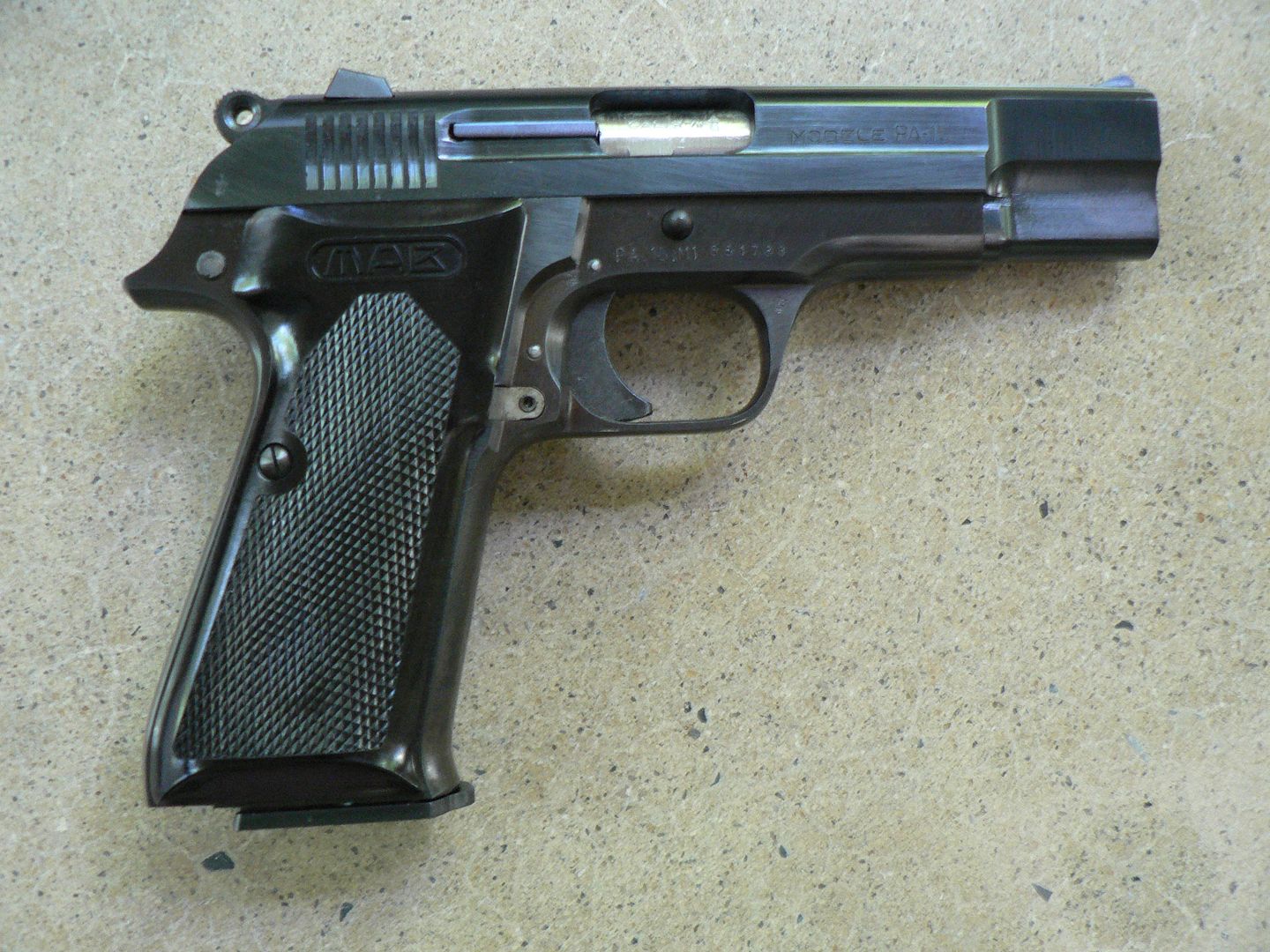 Markings on right side of slide:  Like a dimwit, I forgot to take a close-up of the markings on the left side of the slide. I can take a picture if anyone wants it. St. Etienne inspection stamp at rear of slide: 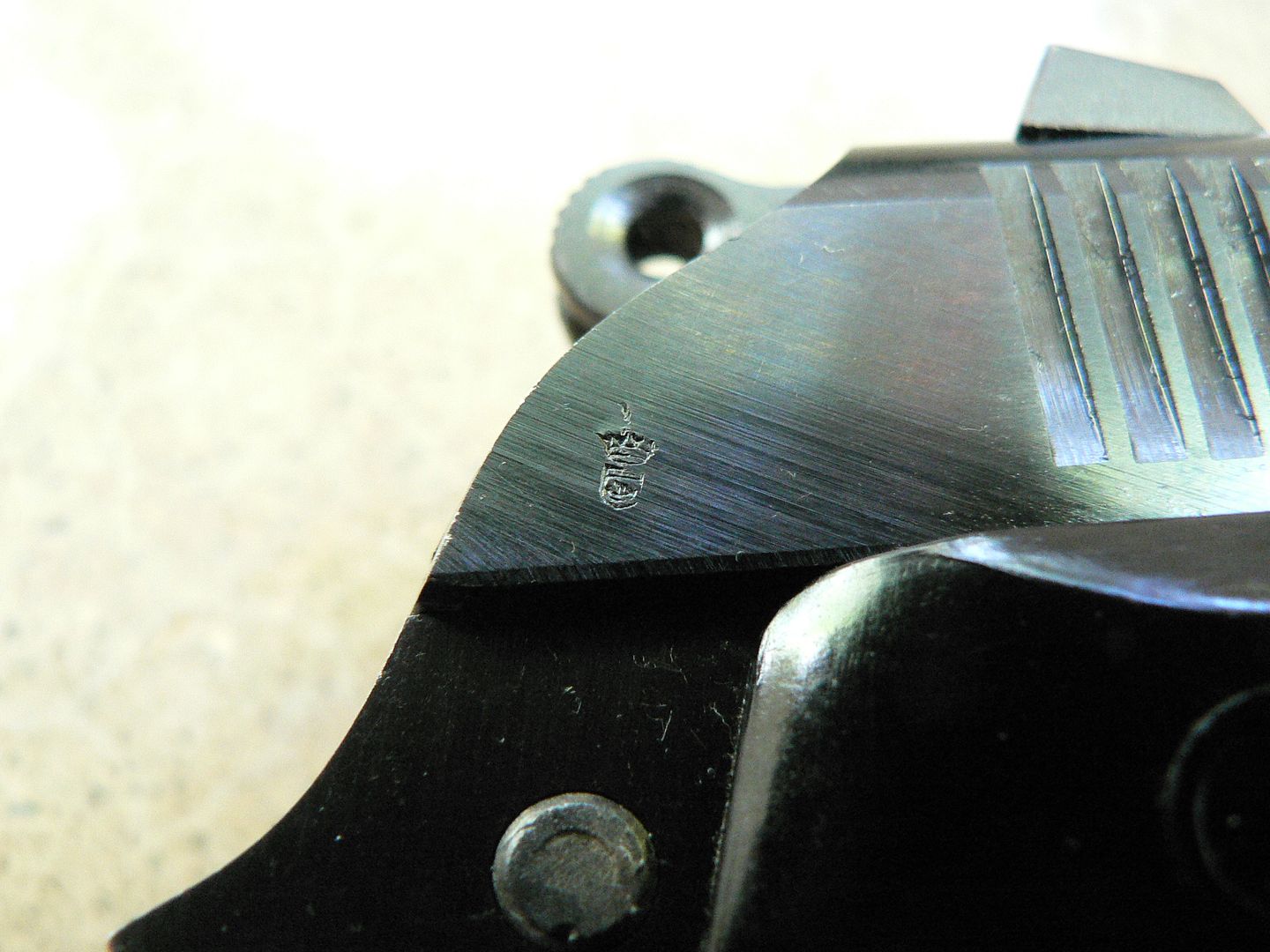 On trigger guard: 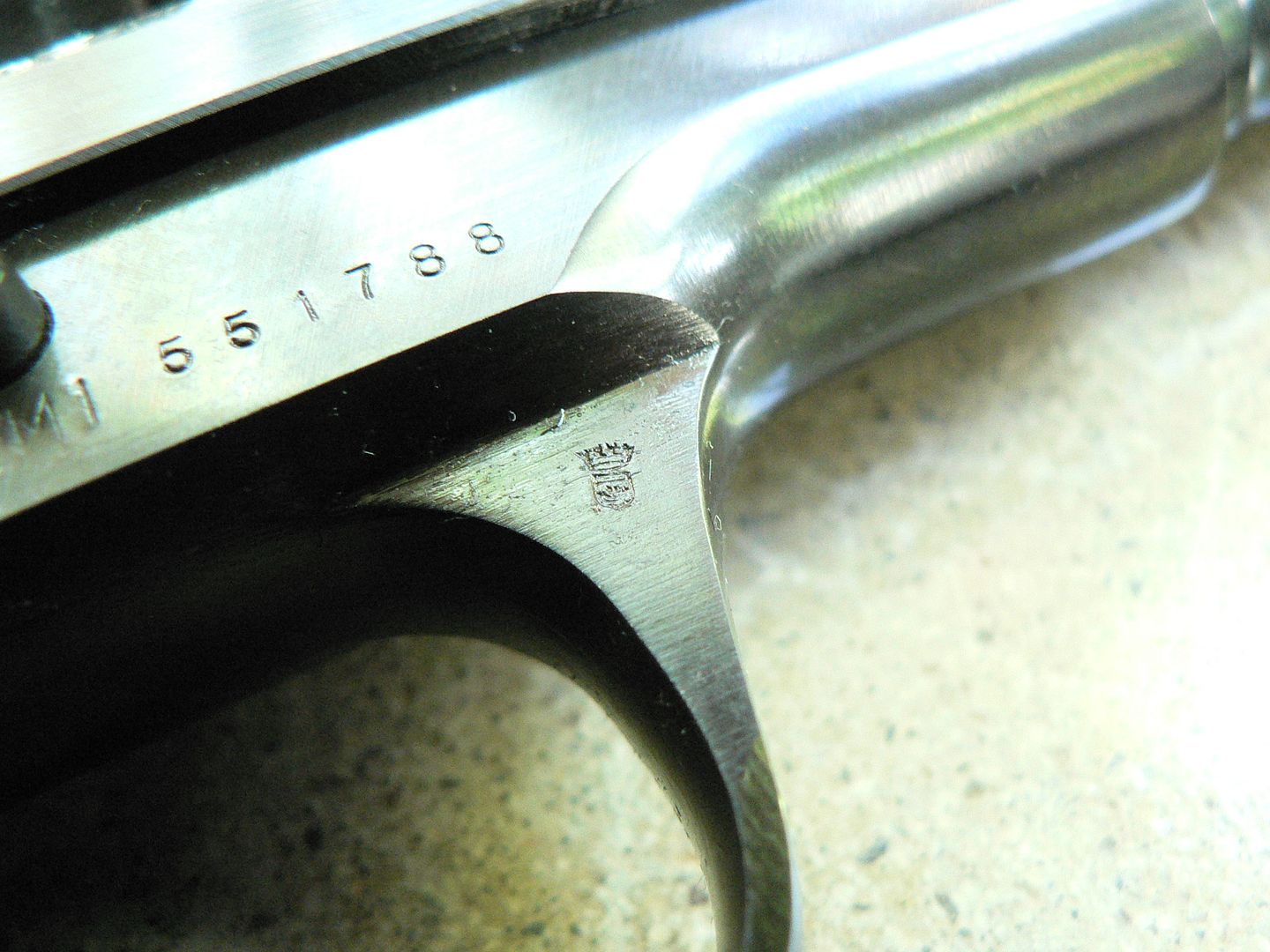 And on barrel: 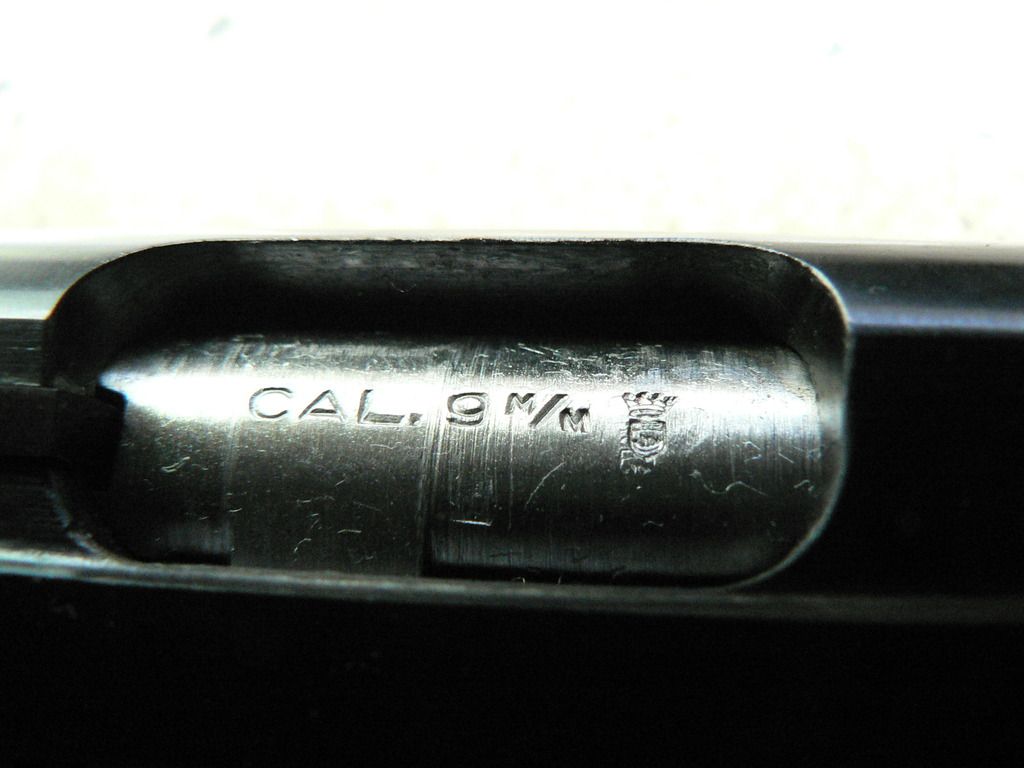 Model designation on right side of frame: 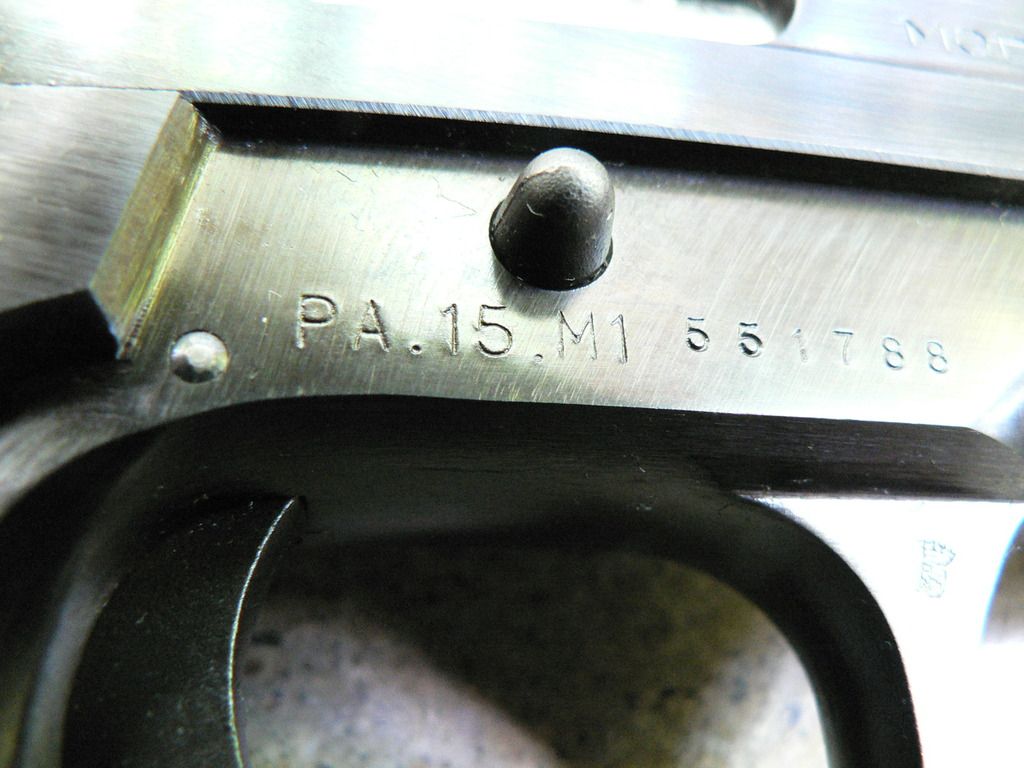 The "M1" designates the "military" model. There was also a target model marked "F1" and a standard model marked "S1". Don't ask me what the differences are between the M and S models as I have no idea. The F model has a longer barrel with a longer slide modified for a tighter fit and adjustable sights. I like pistols*that*this chopped off look to them. It looks so utilitarian and "business" like: 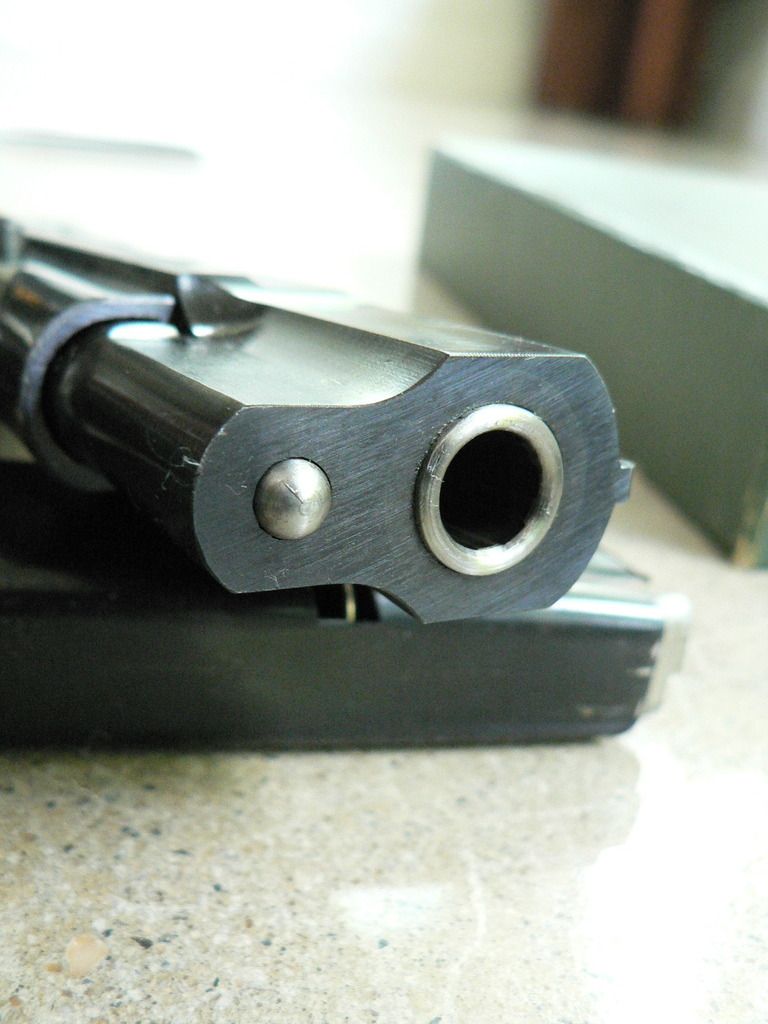 I don't know if the front sight is machined with the slide or attached to it somehow but it's not adjustable or removeable: 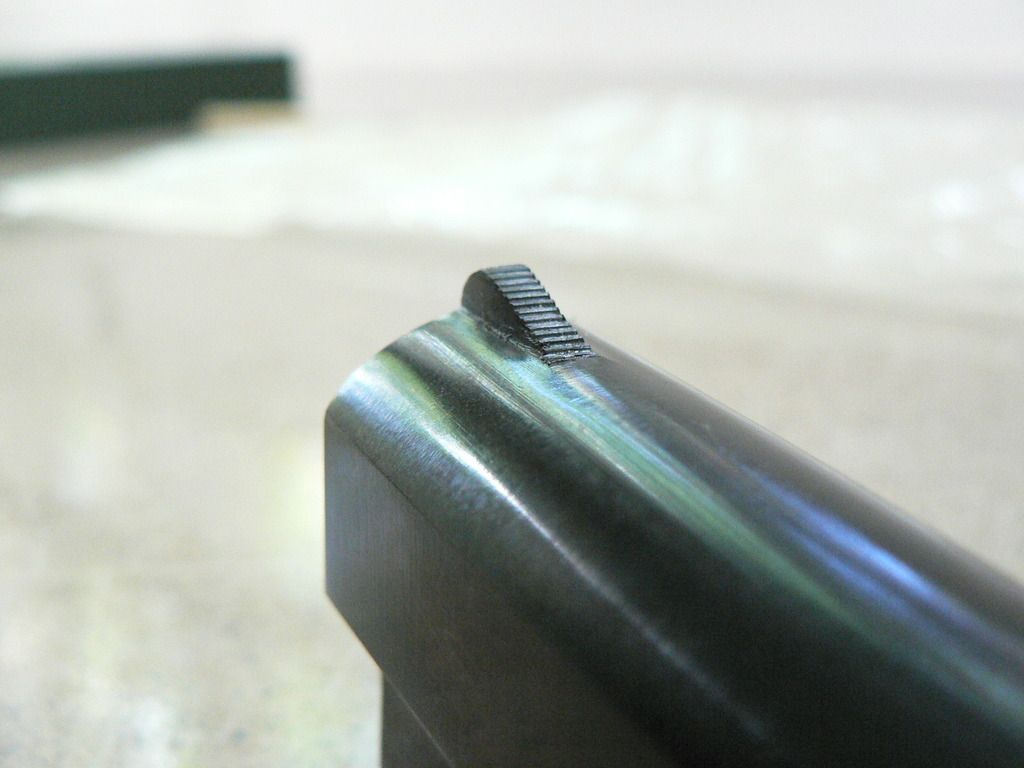 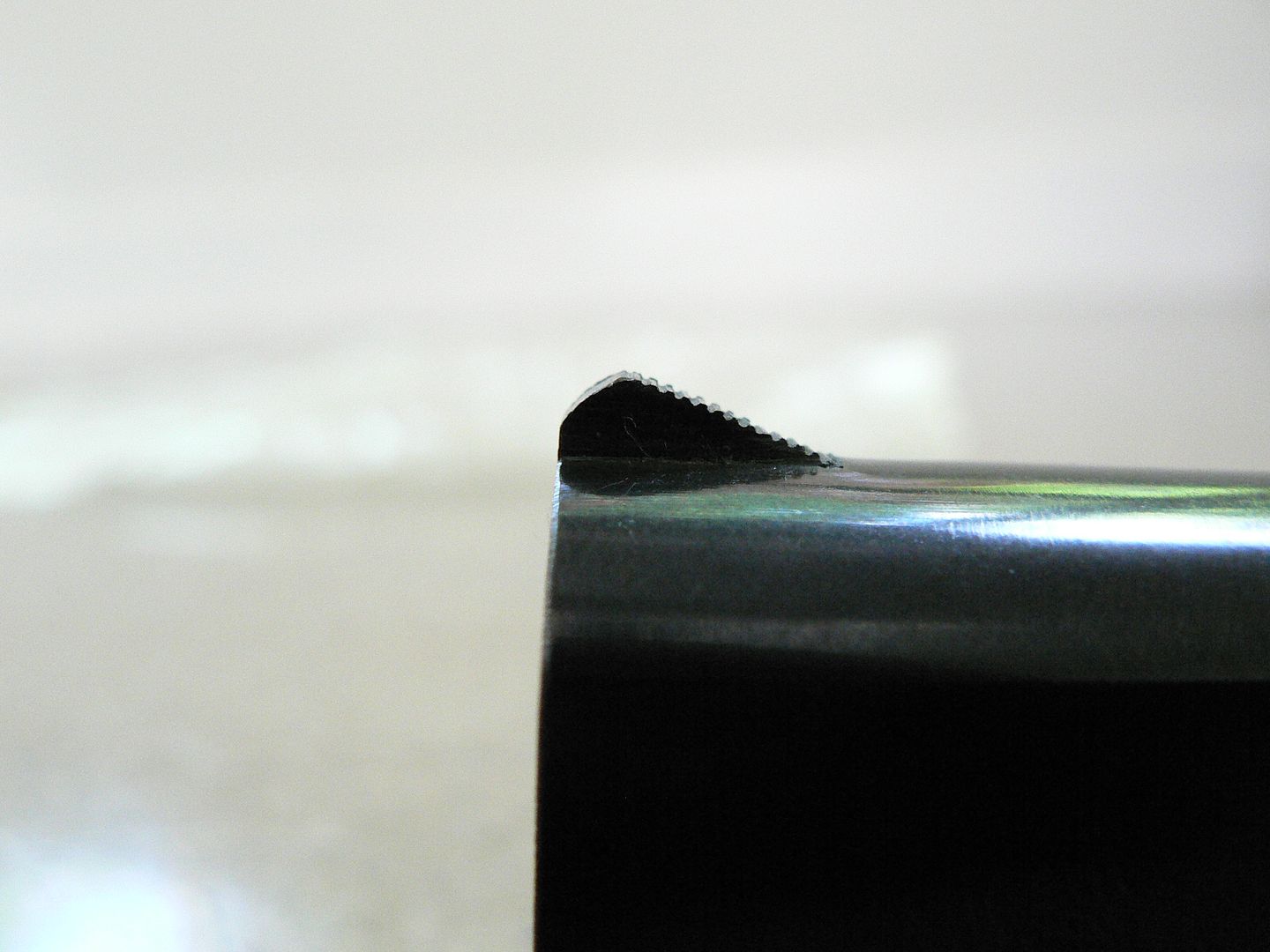 The rear sight is a simple notched affair fitted via a dovetail. It has a nice sight picture: 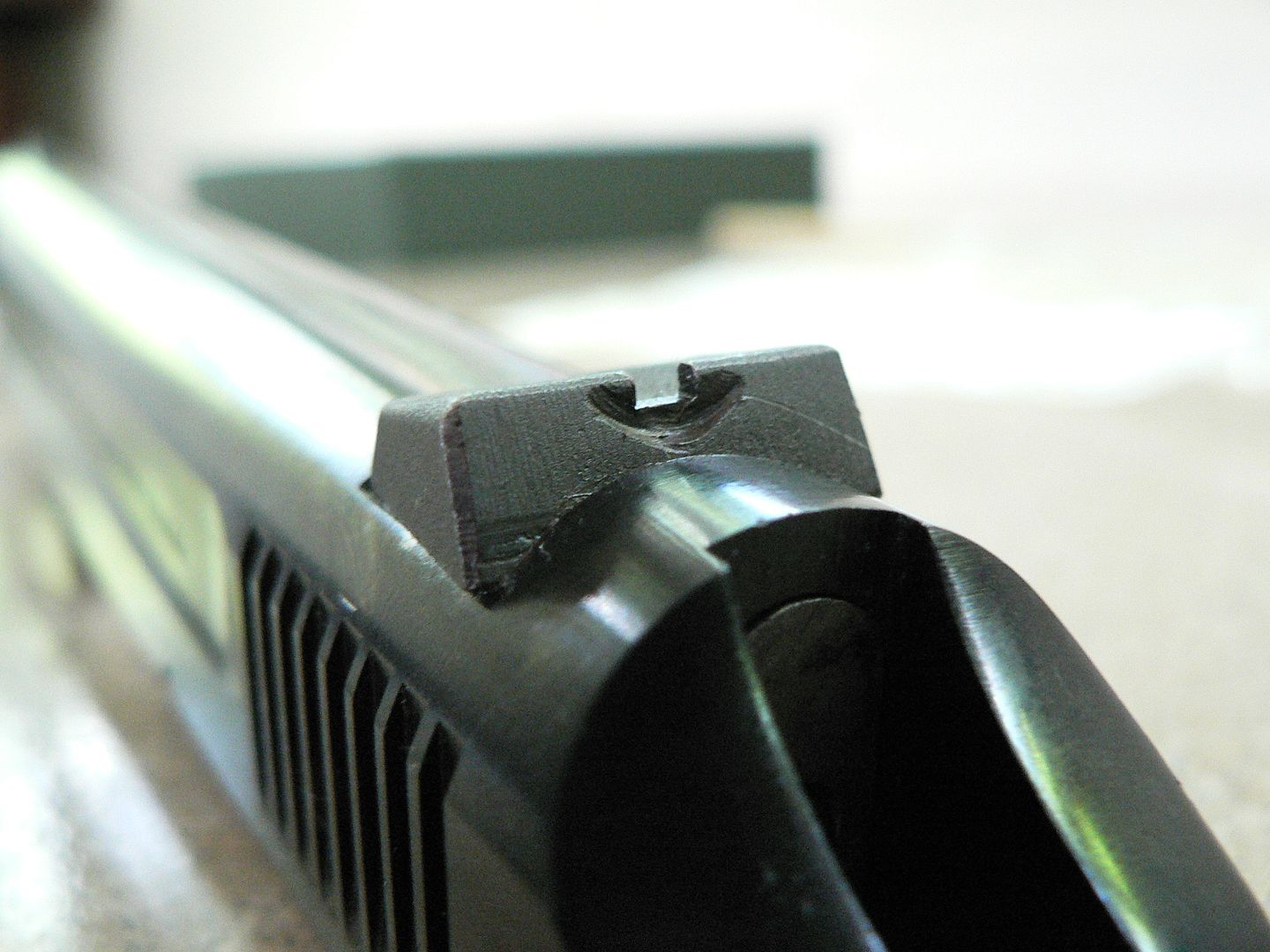 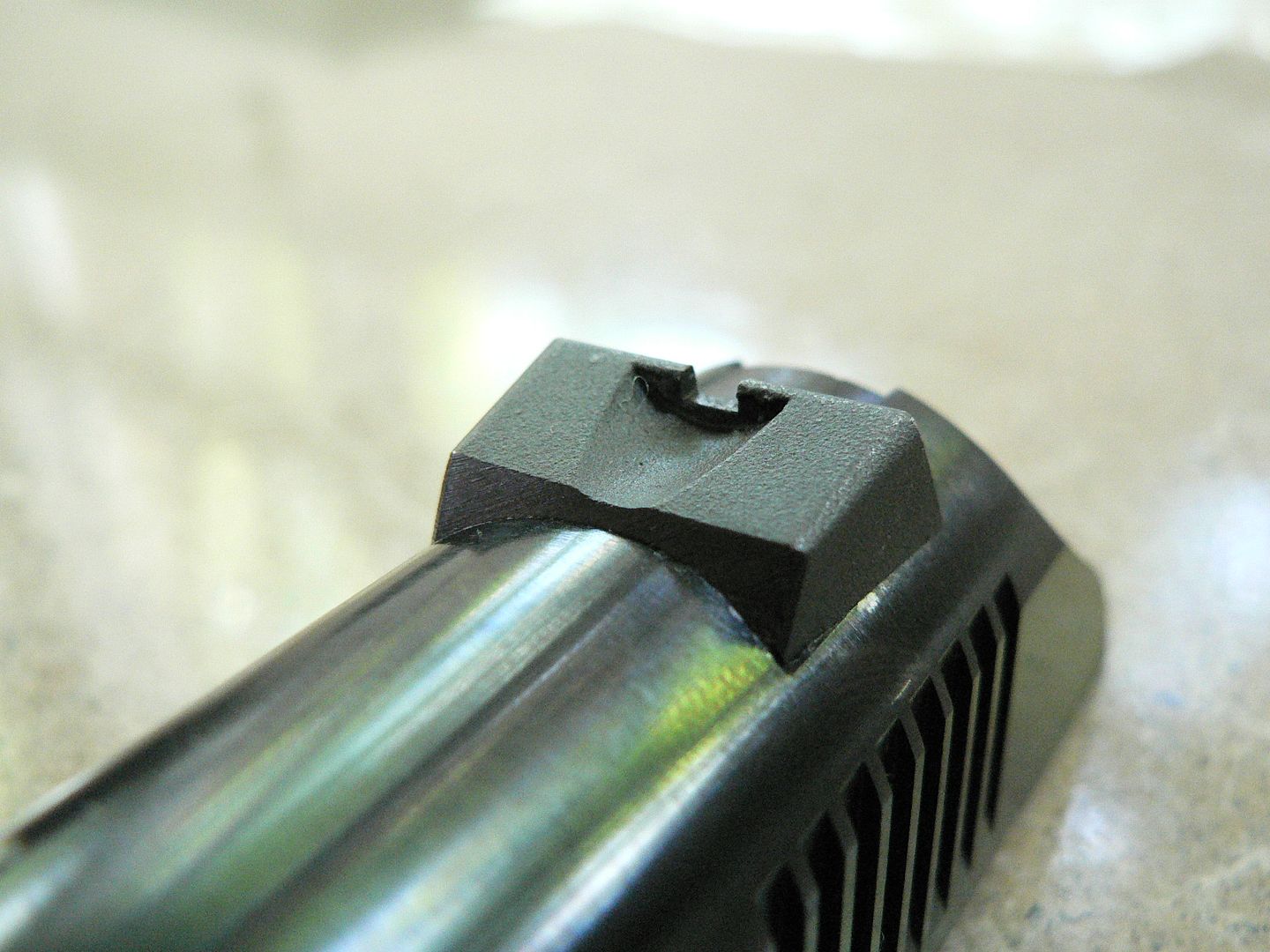 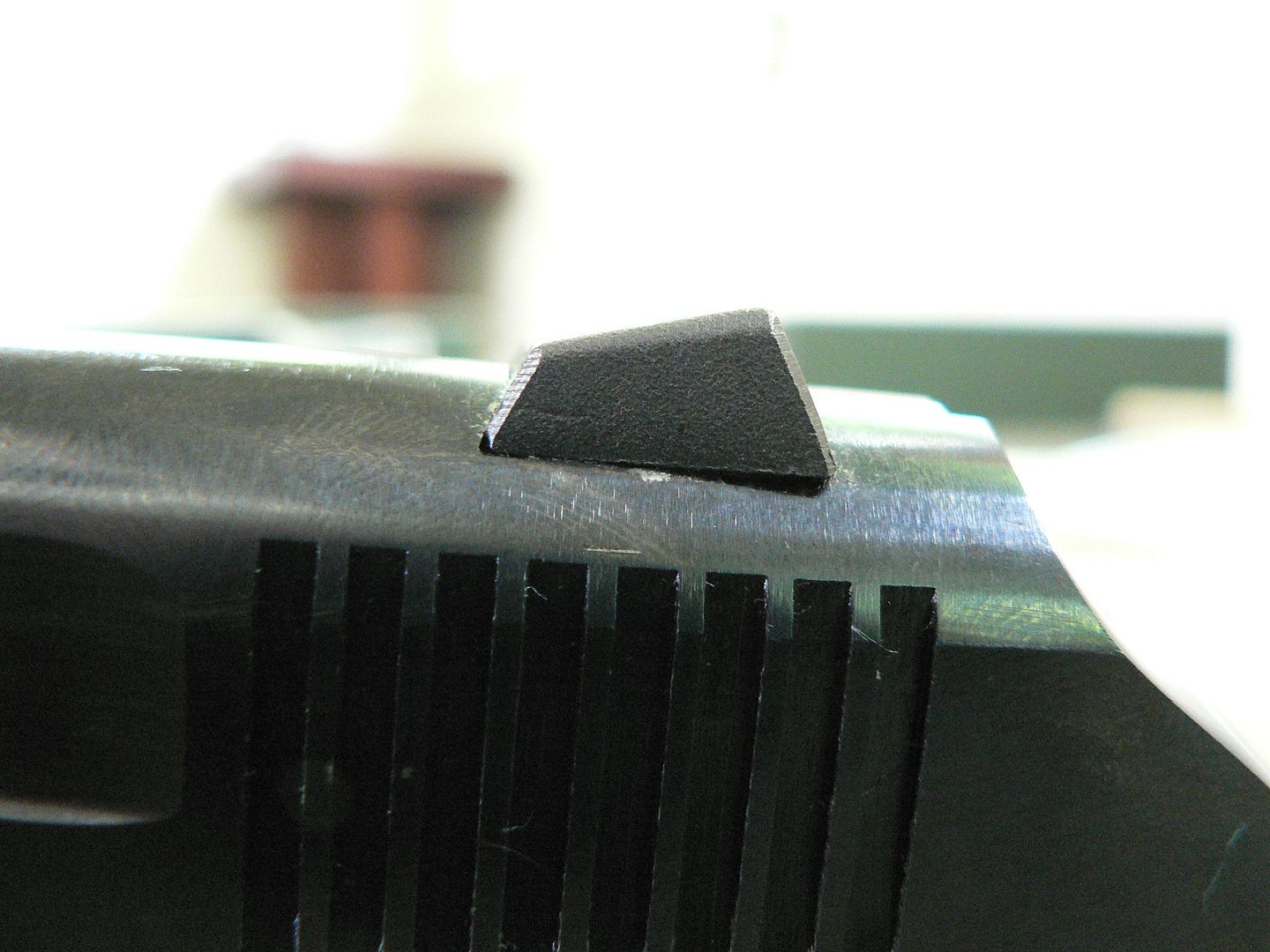 Taking this thing apart is simple but, until you figure it out, it's a bit of a Chinese puzzle box. The only clue is this small cutout on the slide behind the hold open notch: 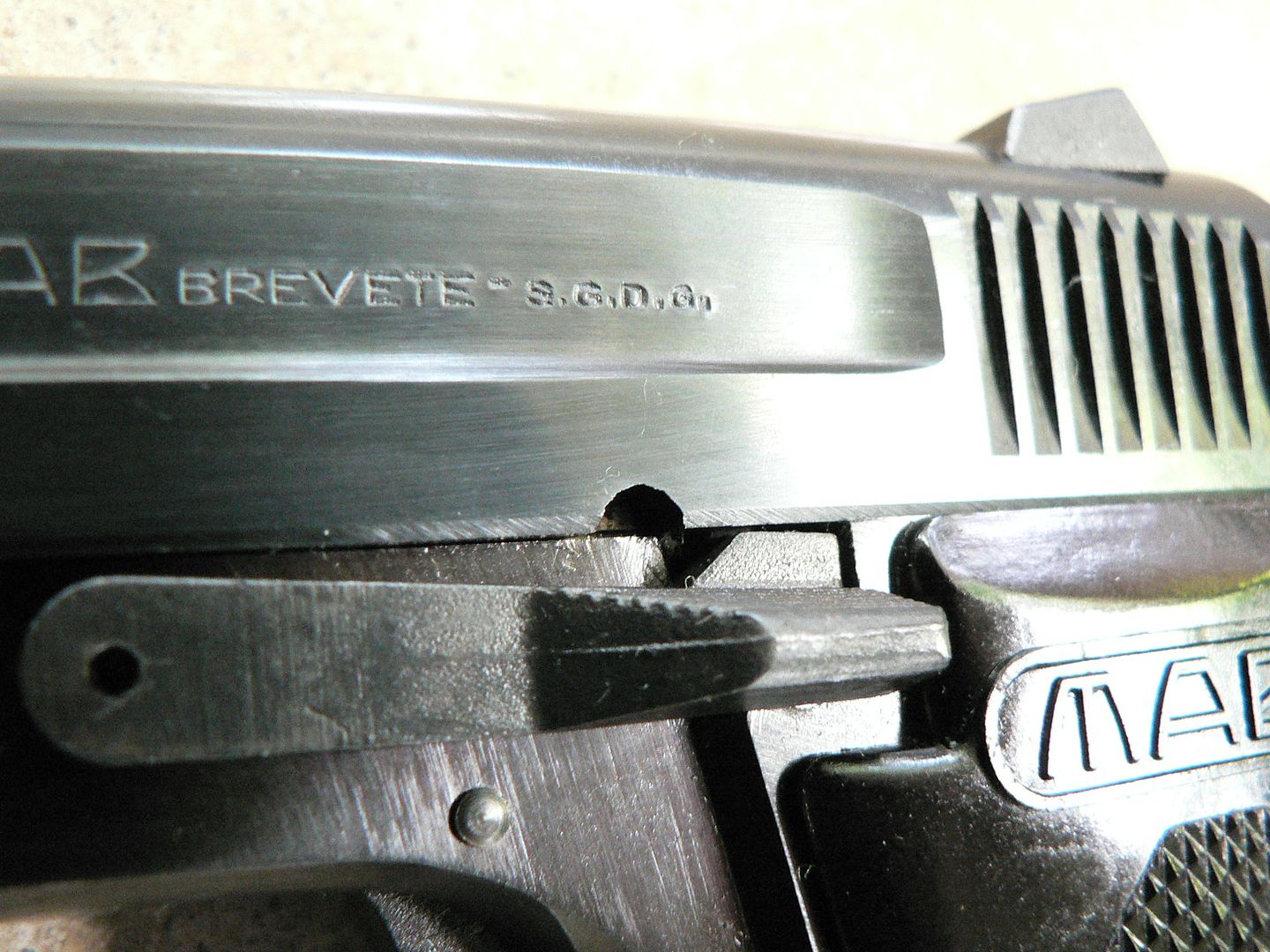 So, it seems obvious to me that all you gotta' do it pull the slide back far enough that the nub on the slide stop aligns with this little cut out and then you can push the slide stop out from right to left. WRONG. Well, maybe you have to*remove the magazine first. You always have to remove the magazine. OK, magazine out; try again. NOPE. Maybe you have to **** the hammer back. The hammer won't budge! Put the magazine back in and now the hammer will move and lock back but I still can't get the slide stop out......what the hex is going on here?? Let's consider the safety for a moment before going any farther because this godly French thingee is getting a bit frustrating. Here's the safety in the fire position: 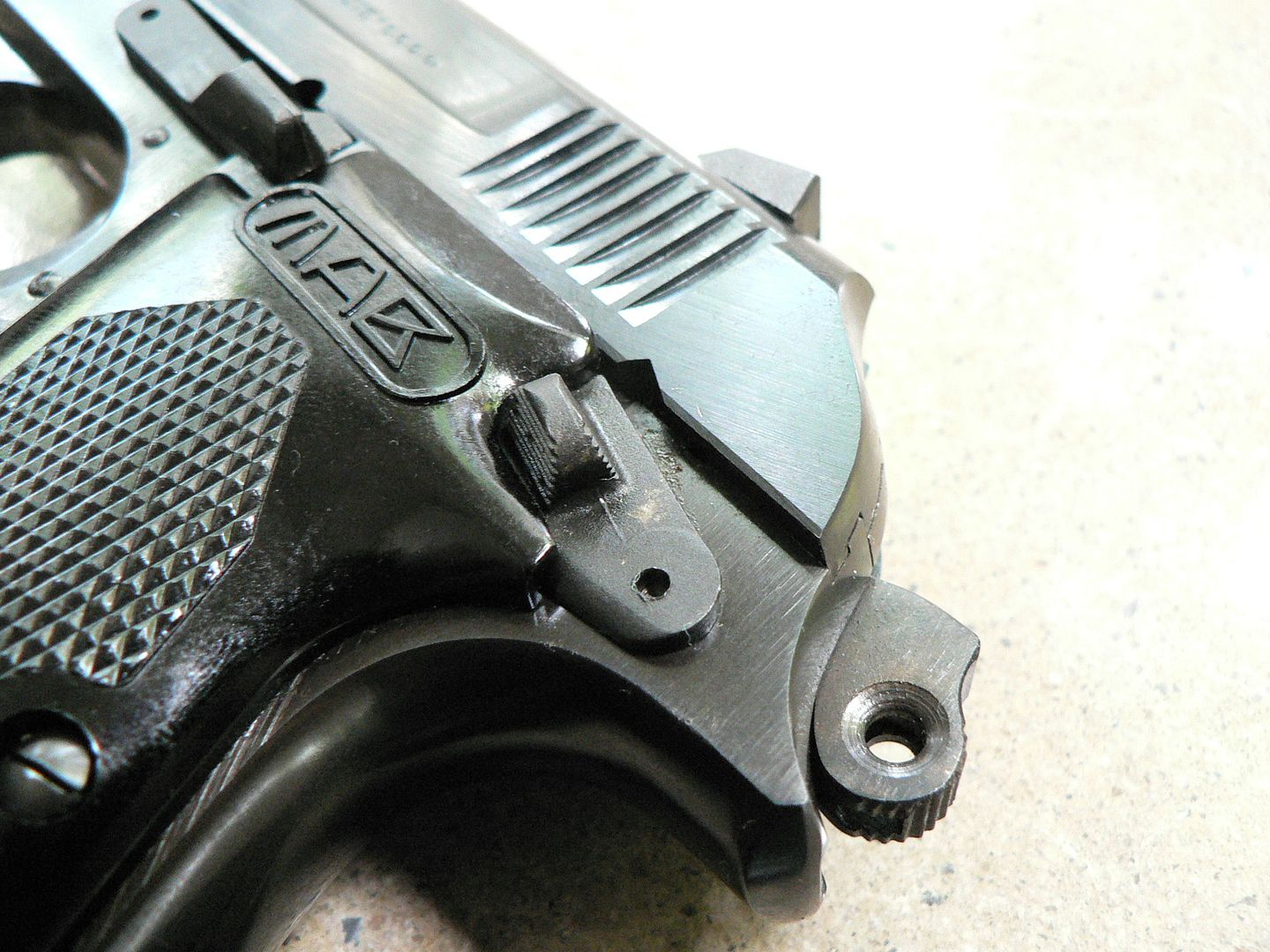 No, it's not ambidextrous. That kind of stuff wasn't much thought of yet so the safety is only on one side of the frame. You cannot engage the safety unless the hammer is cocked and you can't **** the hammer unless the magazine is in the pistol. The trigger won't drop the hammer without the magazine inserted either. If the hammer is cocked and the magazine is either in or out of the pistol, you can cycle the slide. If the hammer is not cocked and you remove the magazine, you cannot cycle the slide because you cannot **** the hammer. If the safety is engaged, you can't cycle the slide whether the magazine is in place or not because the safety locks the slide when engaged. Confused yet? It's French. Actually, the pistol has nothing more than a magazine safety with a slightly strange nuance. Once you understand that the magazine controls not just the trigger but the hammer too, it all makes sense. With the magazine inserted, the PA15 operates just like any other single action pistol. With the magazine removed, you cannot **** the hammer or drop it if cocked. So, you can't run the slide if*the hammer isn't already cocked for obvious reasons. The manual safety can only be engaged if the pistol is cocked and it locks the slide just like many other pistols before and since the PA15 was born. Now, here's the safety engaged: 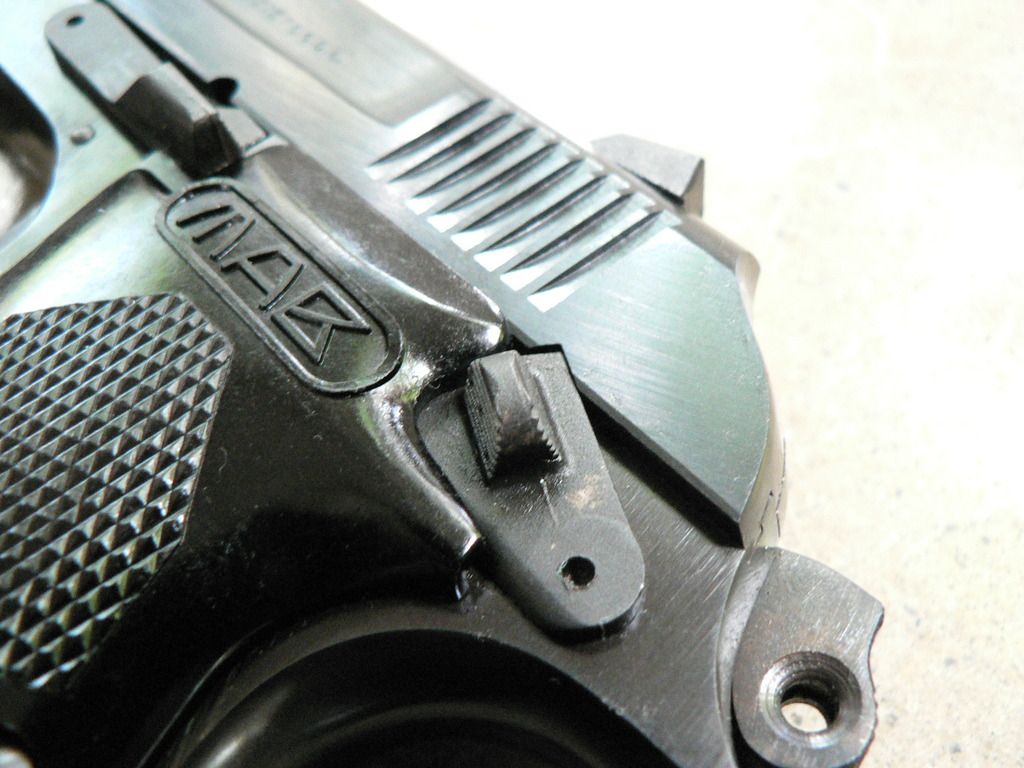 It has a short and easy throw and is easily found by the thumb. SO......how does it come apart. It's simple. 1. **** the hammer. 2. Remove the magazine. 3. Pull the slide back until the*disassembly cutout aligns with the nub on the slide stop and hold it there. 4. Push the slide stop from right to left and remove. 5. Pull slide forward and off of the frame. Set the frame aside. Now we have to remove the bits from the slide: 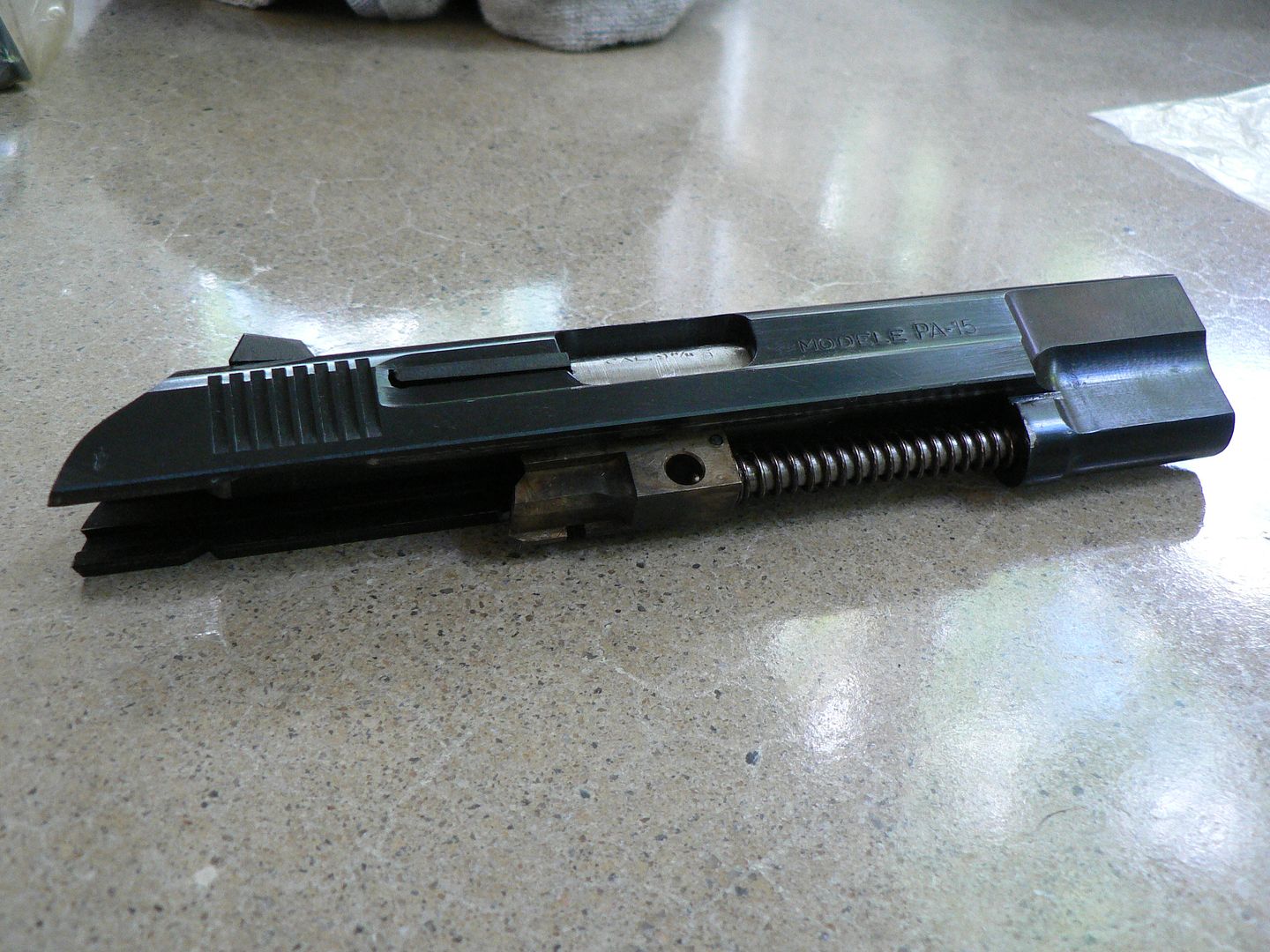 Below the ejection port is a bronze colored thingee with a hole in it (the slide stop axle goes through that hole) called the cradle. Pull this down and to the rear. The recoil spring will come out with it. Next, pull the barrel down and to the rear and you're done. Here is the pistol field stripped and ready for cleaning and inspection: 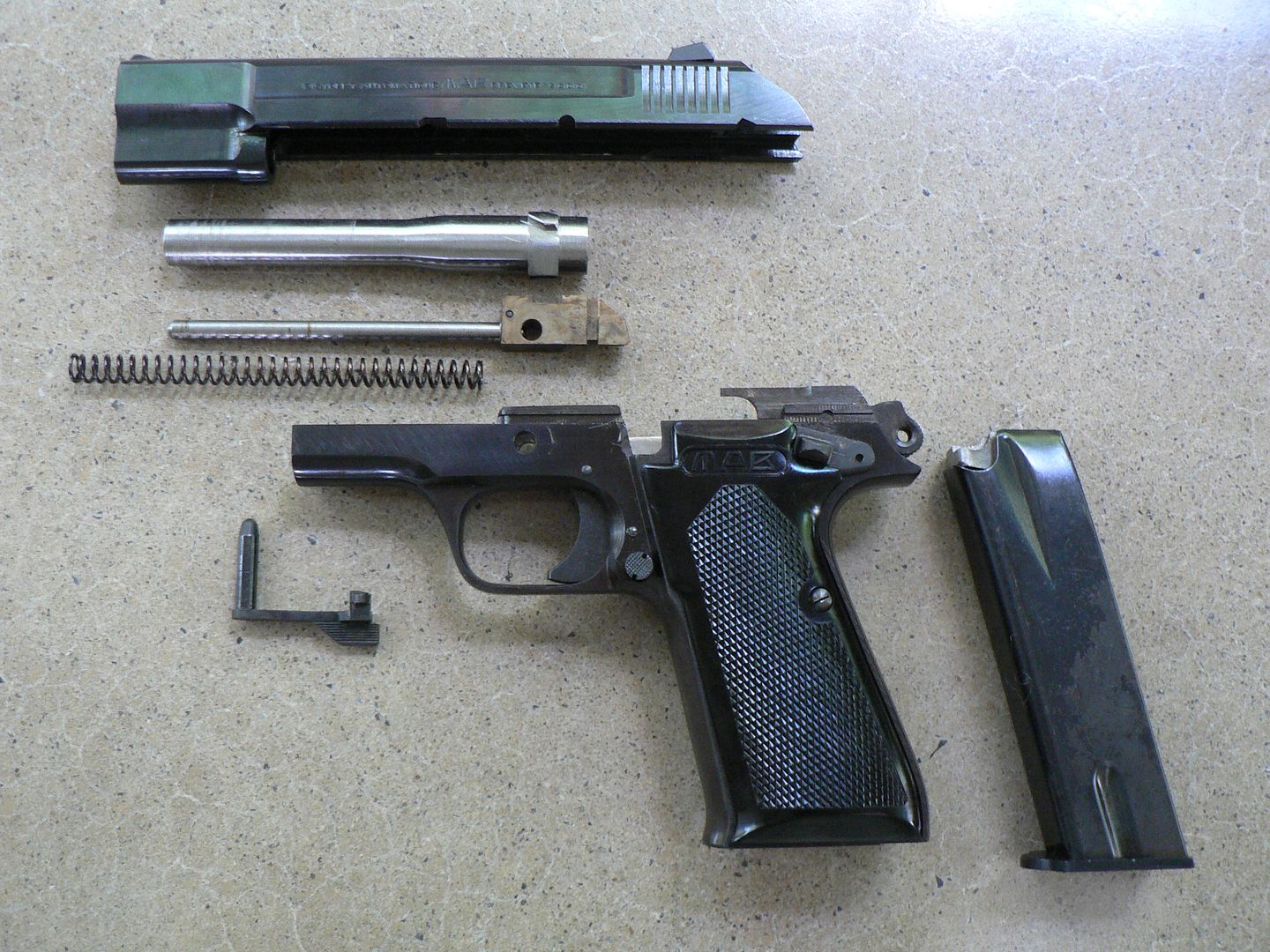 Here is the slide stop showing the last three digits of the serial number: 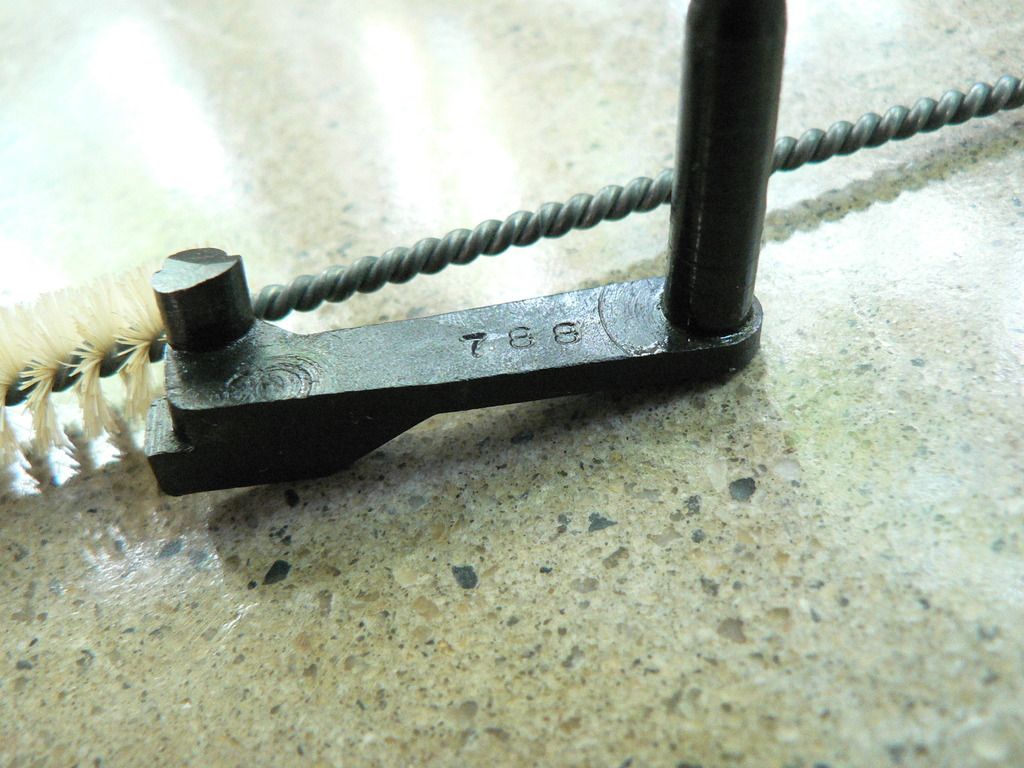 I believe this part is cast but I can't be sure because I'm not all that bright. The ejector is also numbered: 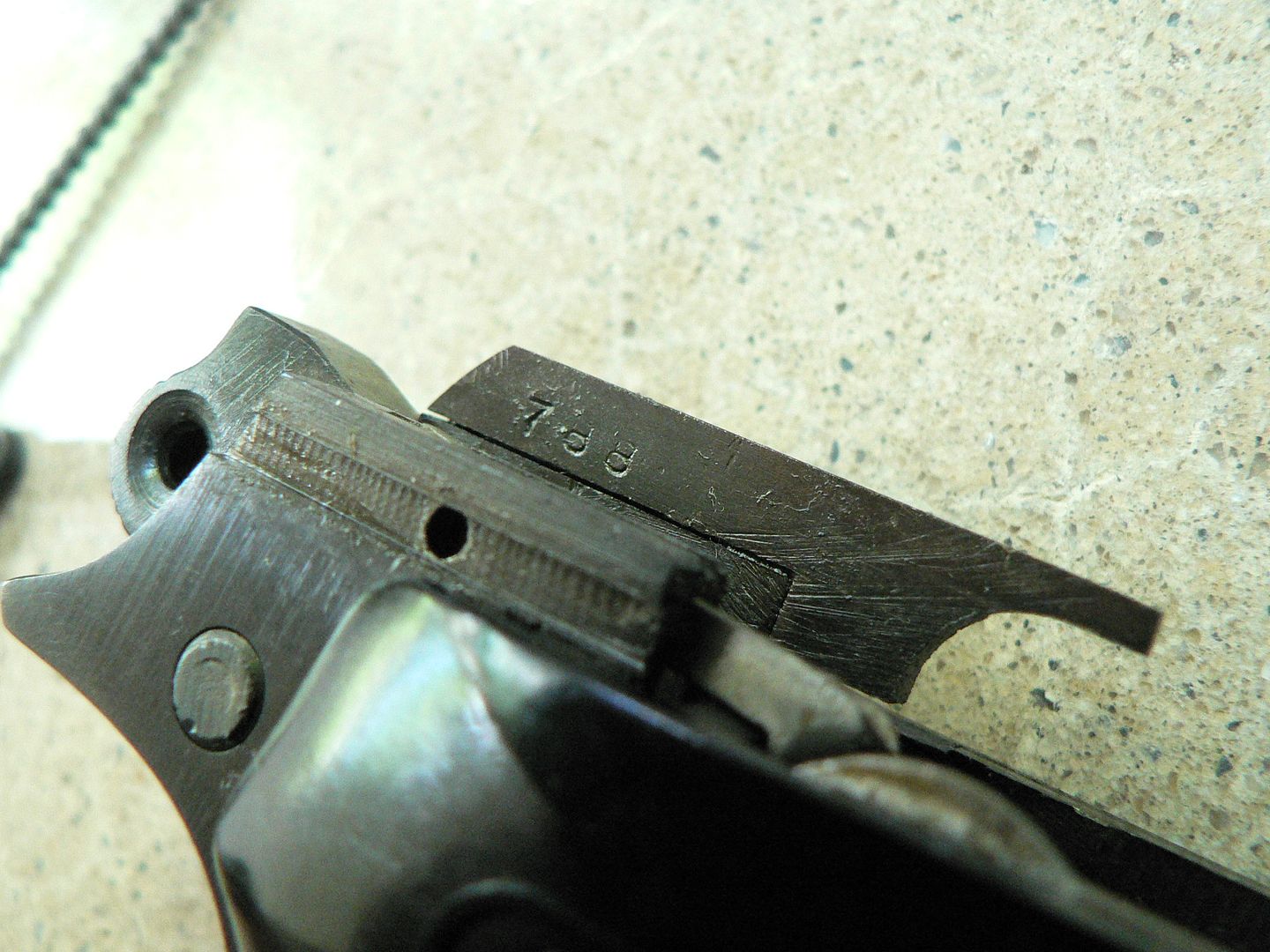 Dig those funky cool machining marks! Way to go Frenchie!! Give it that late war German look!! A look down into the trigger mechanism:  Nothing special going on here. It's a single action only mechanism with a magazine safety. The "cradle" is numbered matched too: 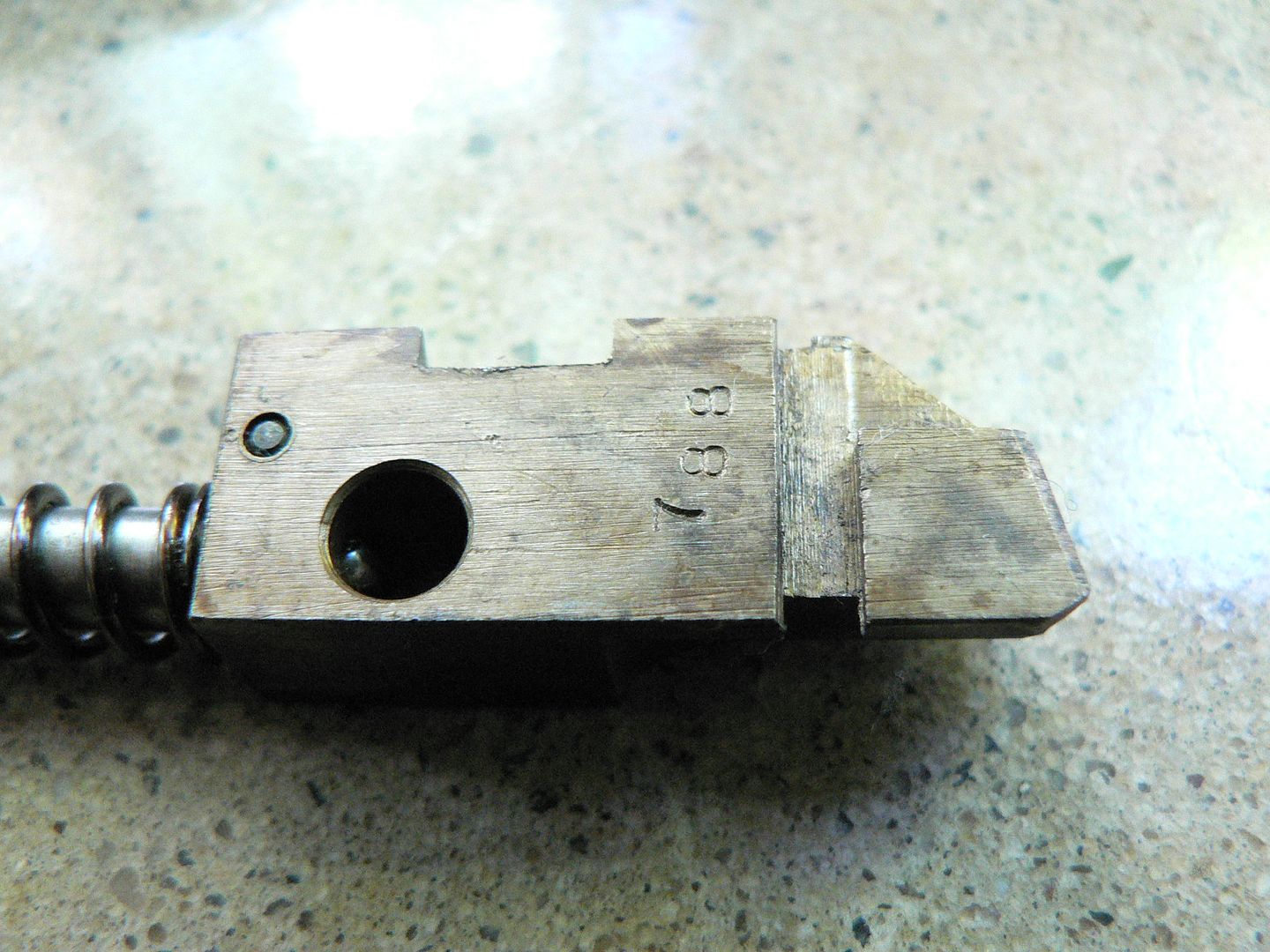 The slide stop axle passes through the hole, locking this part firmly into the frame. It has a polished feed ramp machined into the rear (right side of frame) and the recoil spring guide rod is pinned into the front. Up top is a machined groove that acts as a bearing for the rotating barrel. Here is a top down picture of the cradle showing the feed ramp and barrel bearing surface: 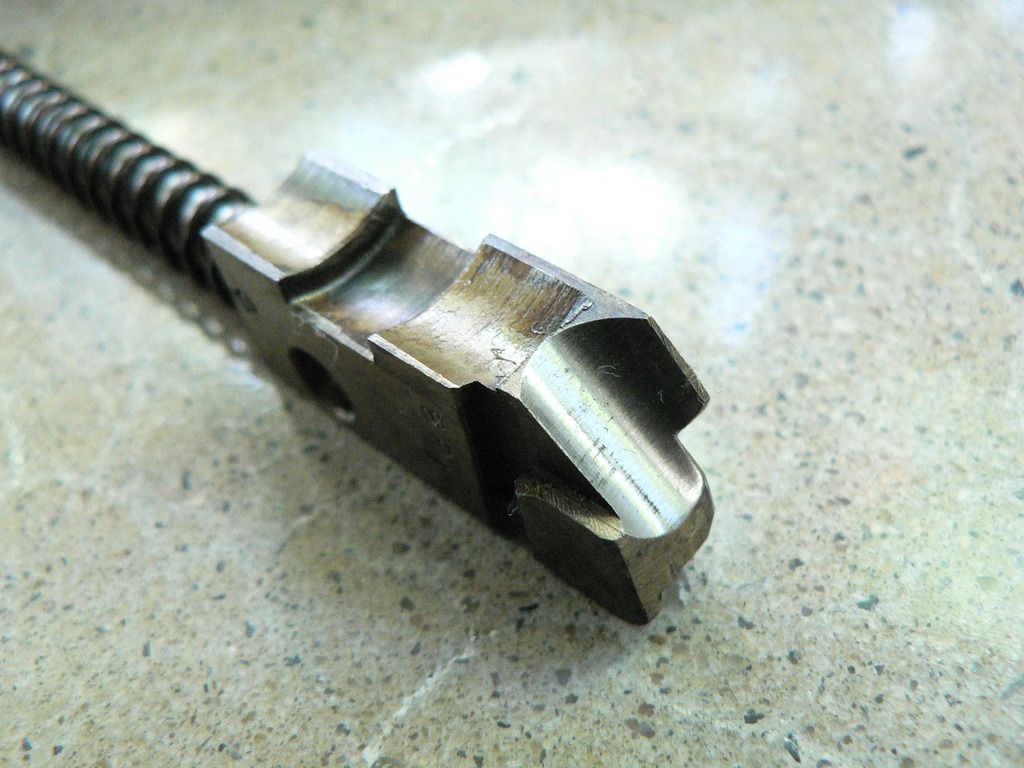 In this shot, we see the lug on the bottom of the barrel (again, numbered to the pistol) that engages the cradle: 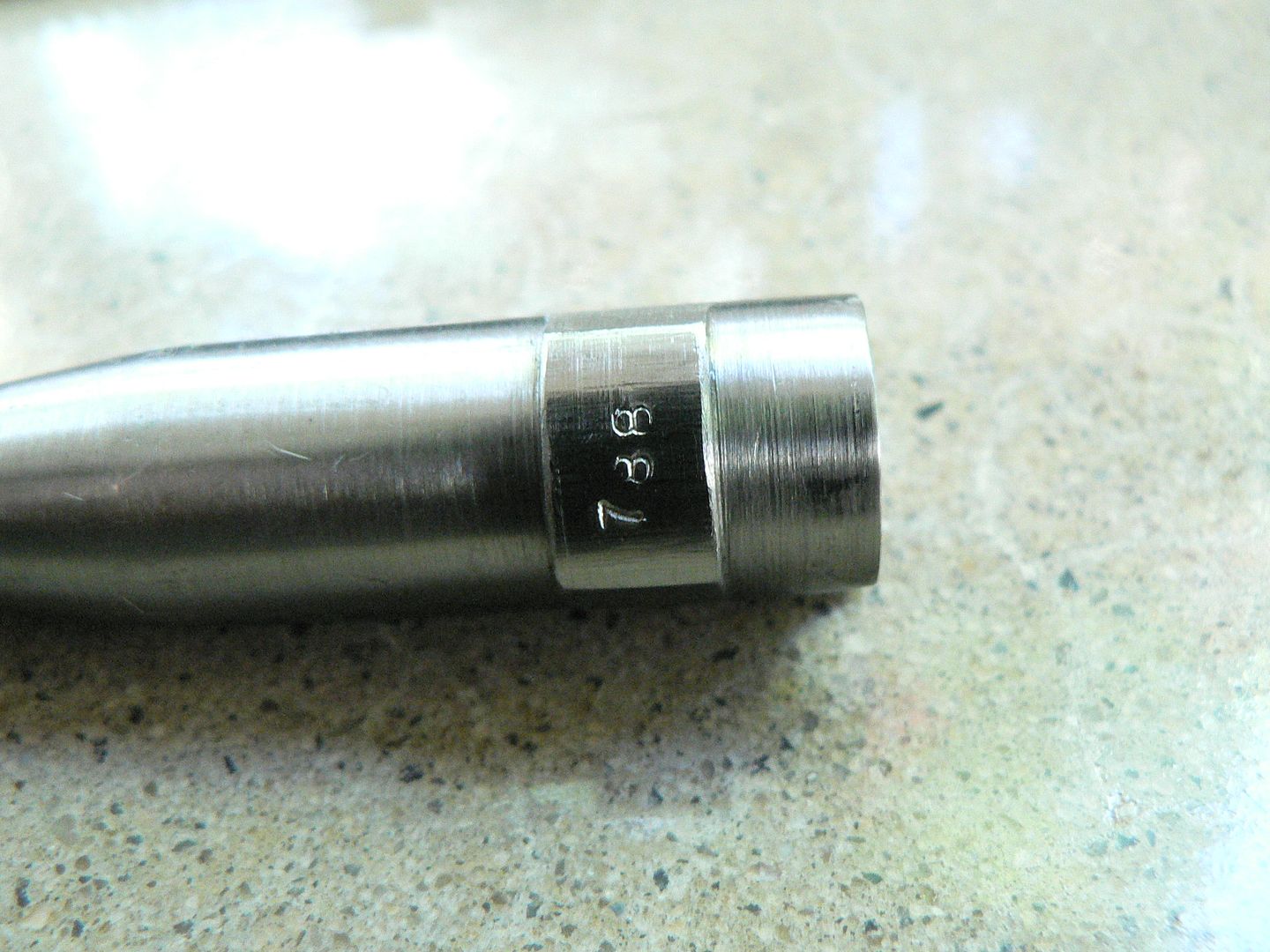 And the lug on top of the barrel that engages the cam slot in the slide causing the barrel to rotate during recoil: 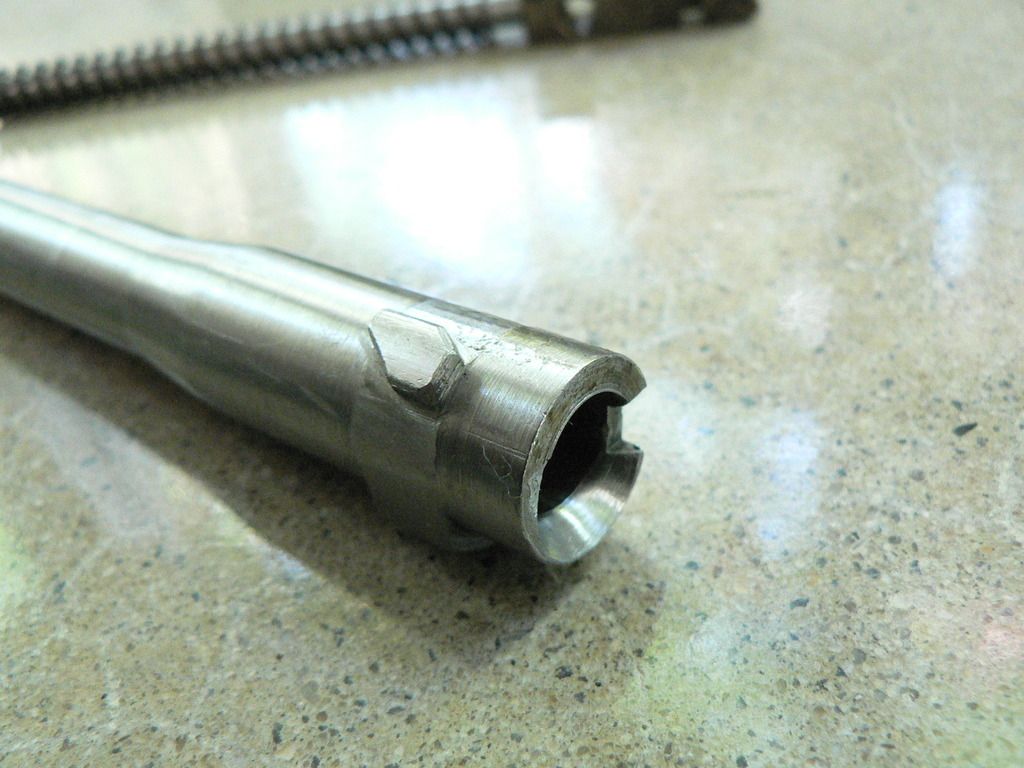 The barrel engaged with the cradle as it would appear when assembled:  The barrel reminds me of a WWI artillery piece for some reason. Here's the cam slot machined into the slide: 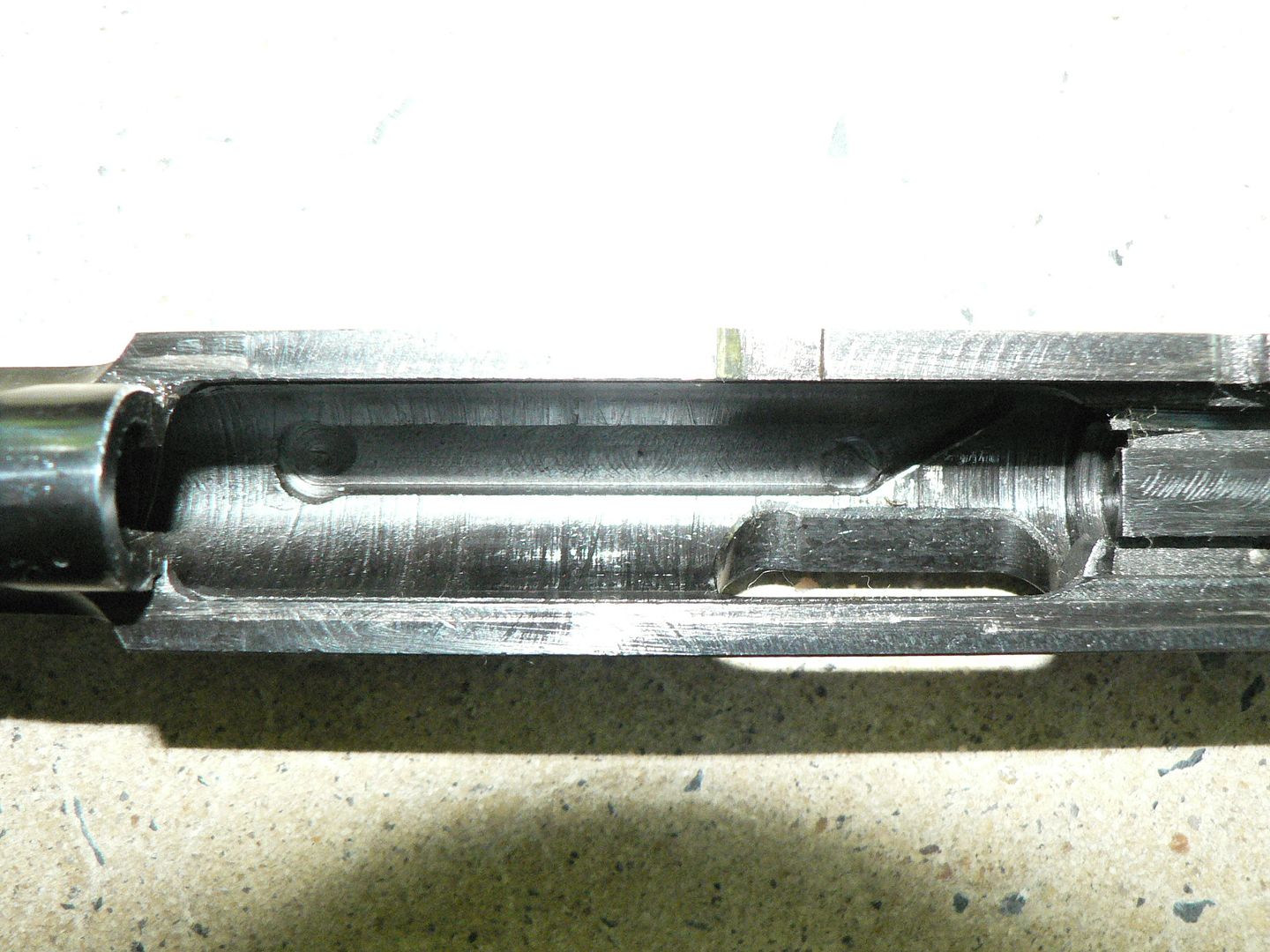  That's some rough machining but it feels buttery smooth when drawing the slide to the rear so it's done well enough. Detail shot of the bottom rear of the slide:  The firing pin is removed by pushing it into the slide and pulling the retaining plate down and out. Nothing out of the ordinary there. Again, rough looking machining but you certainly can't feel it when operating the slide. The "88" is the last two digits of the serial number. Checkered magazine release button: 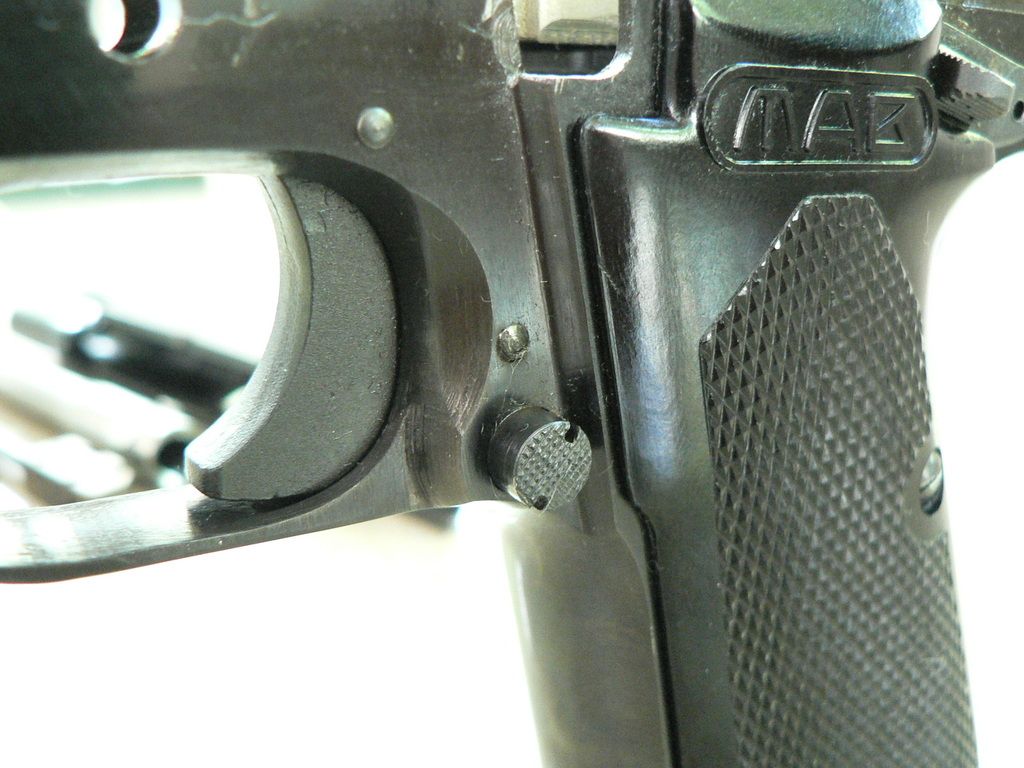 Most of these were made with concentric circles. We'll see that when we look at the other one. The other side of the magazine release: 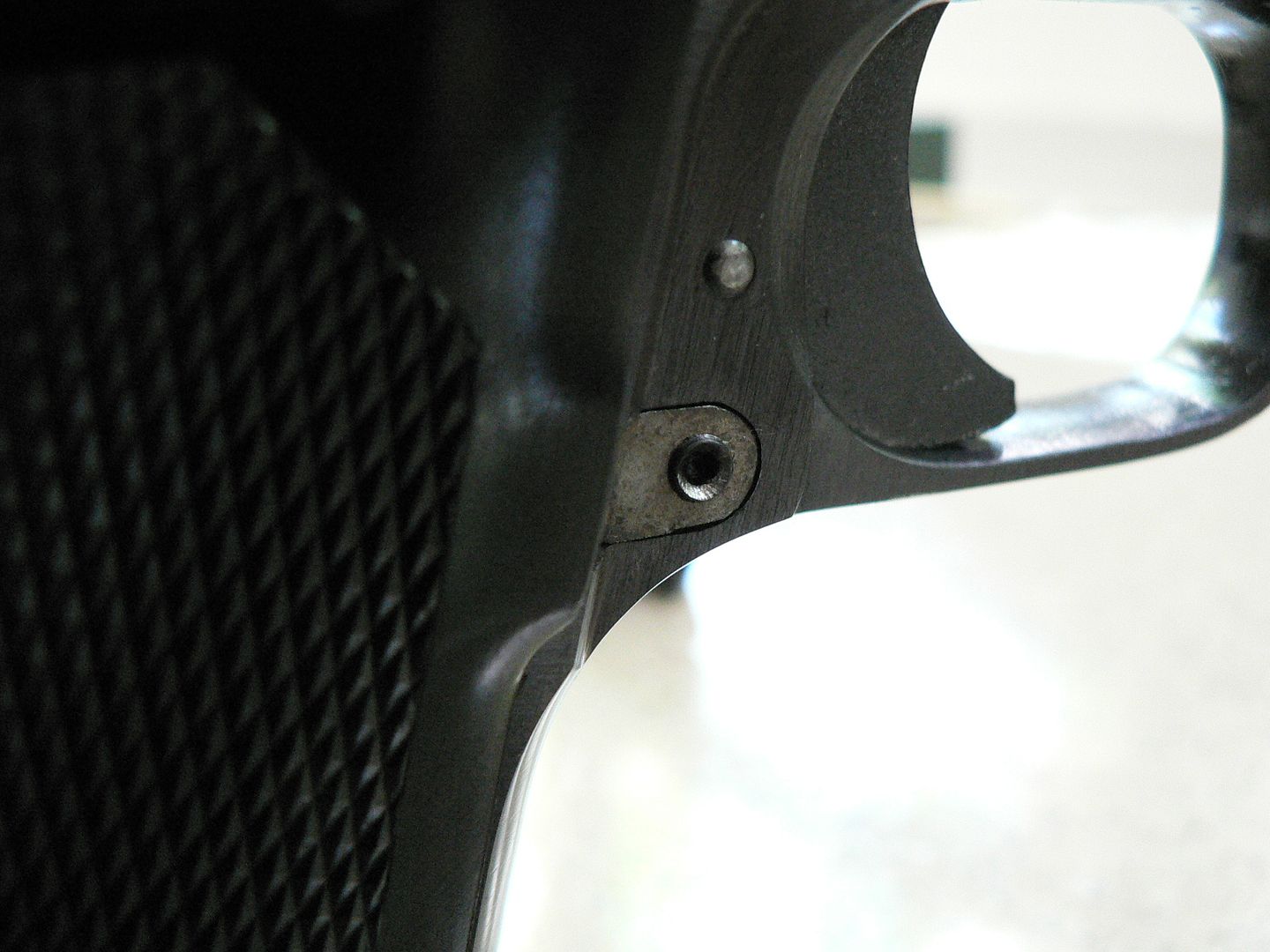 This appears to be in the white but discolored due to what I assume is hardening much like the barrel cradle. A close up of the right front frame rail:  A feature copied from the Hi Power, internal rails at the front of the frame: 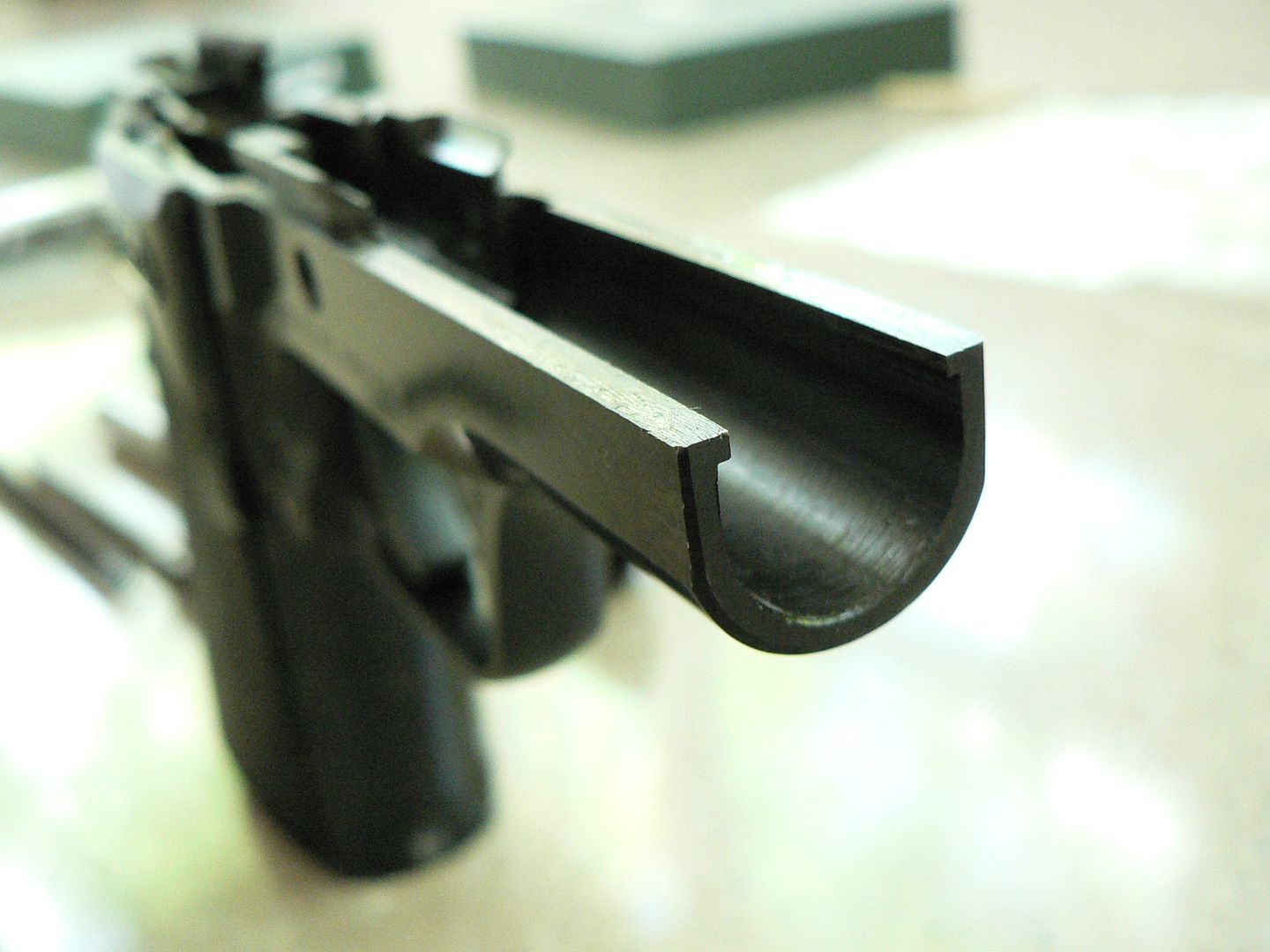 And the corresponding cut out on the slide: 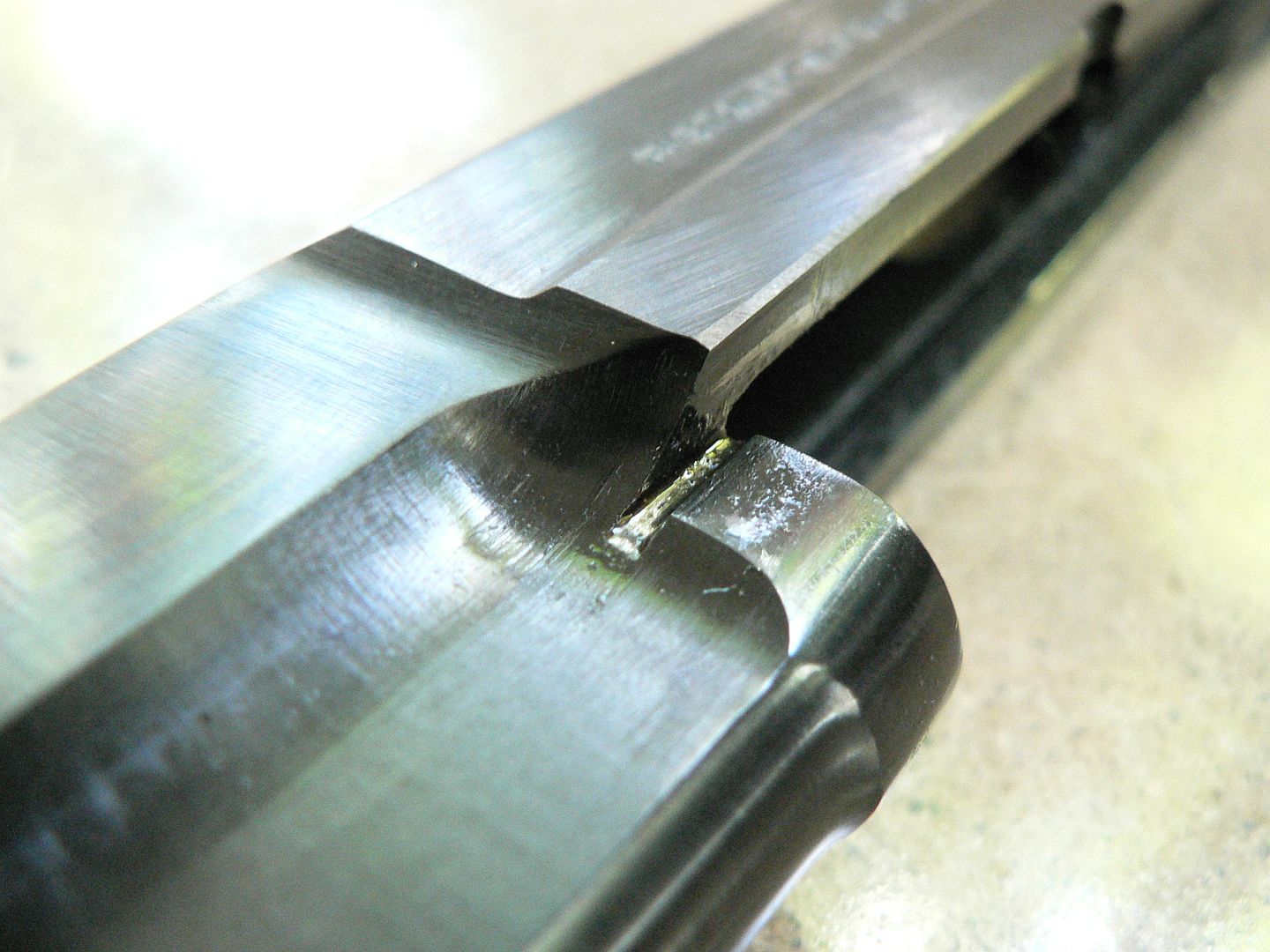 Here we see the cradle in place in the frame: 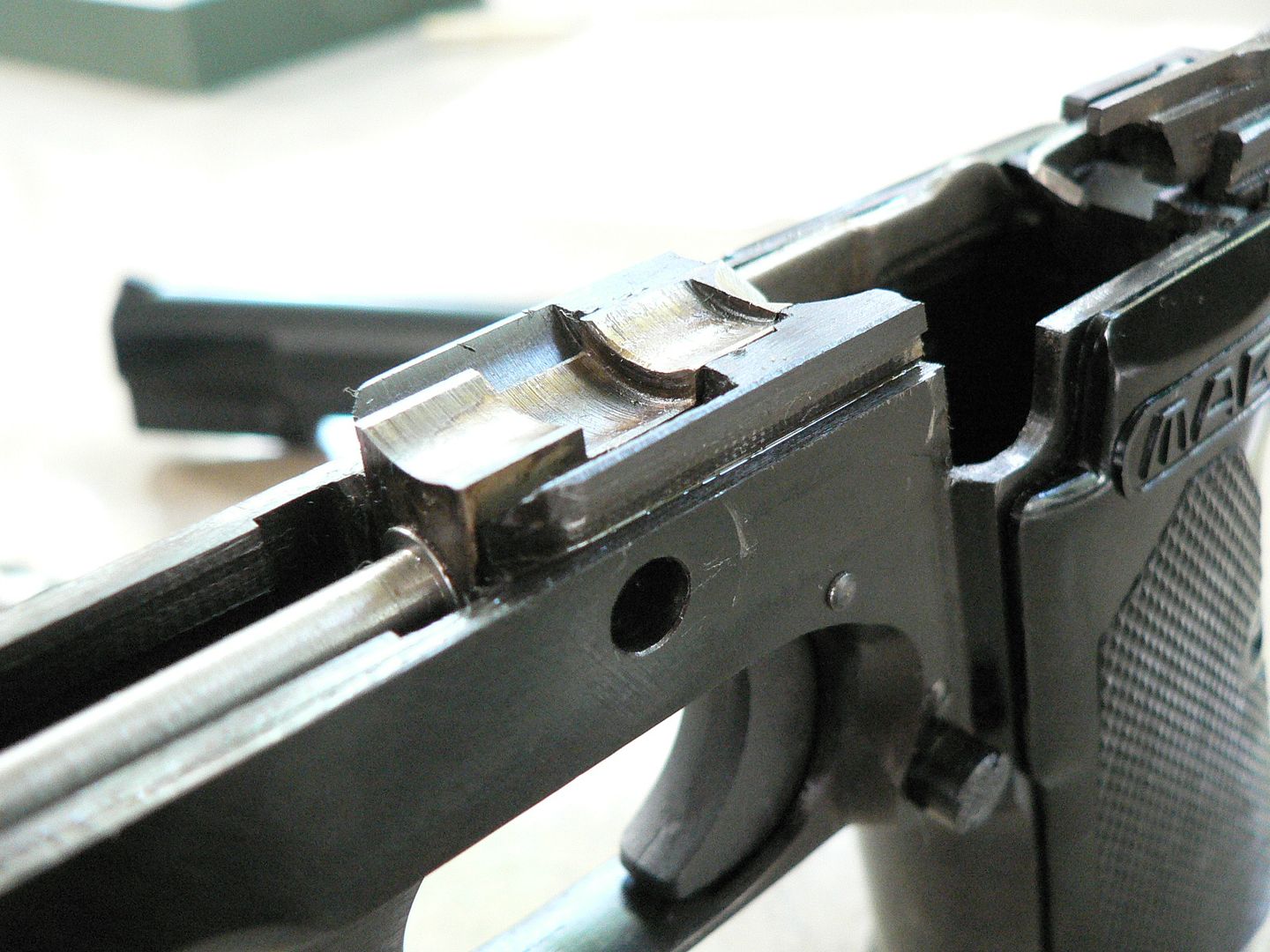 On this pistol it's a perfect fit. On the later Howco import we'll look at next, the cradle is so tight a fit that the slide must be firmly pulled forward upon disassembly for it to let loose. A detail shot showing the cradle and barrel in place illustrating how nicely machined the feed ramp is: 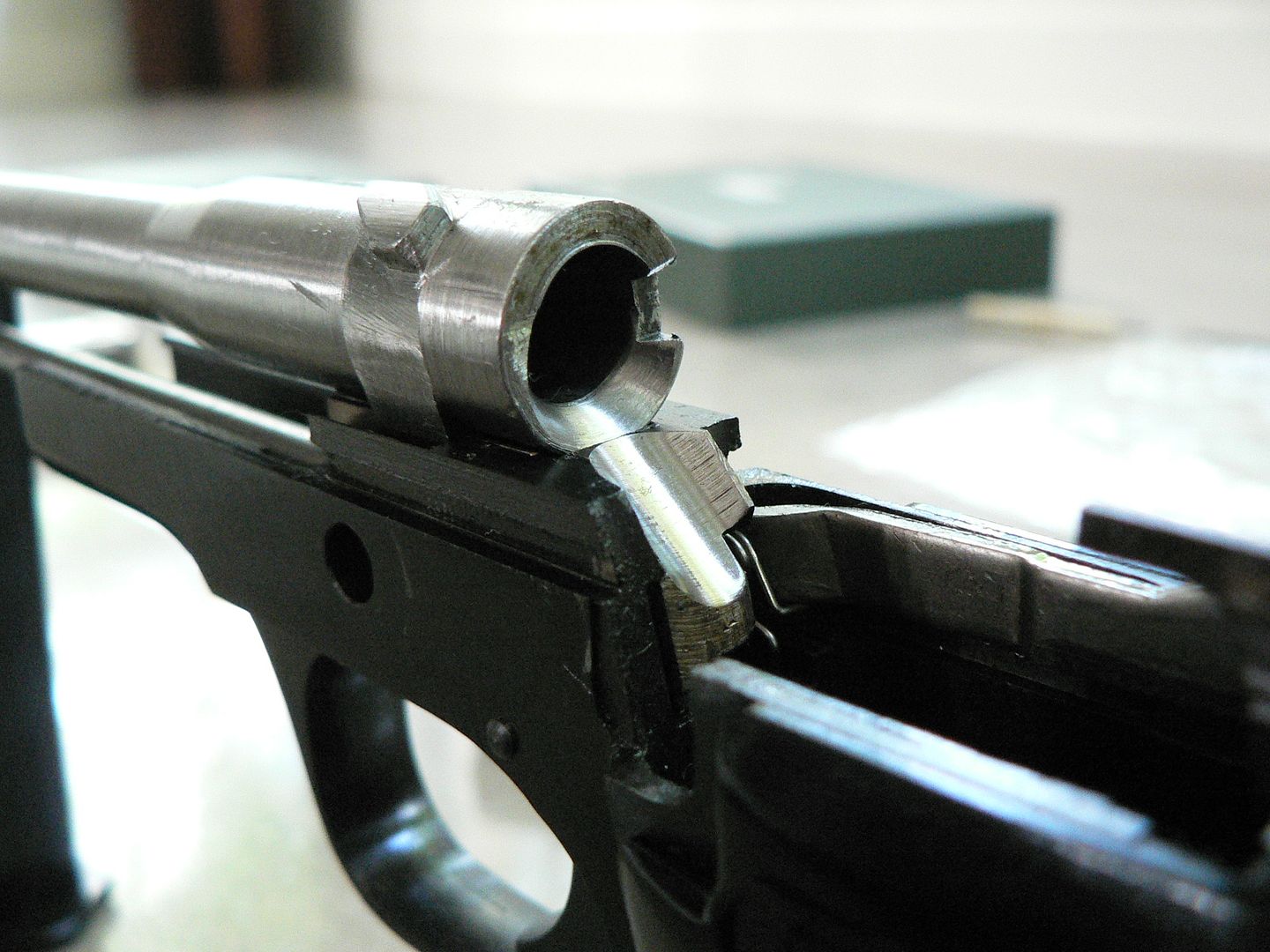 Because of the care taken during manufacturing (despite all the obvious machine marks), these pistols are known for excellent reliability. And another one with the magazine in place: 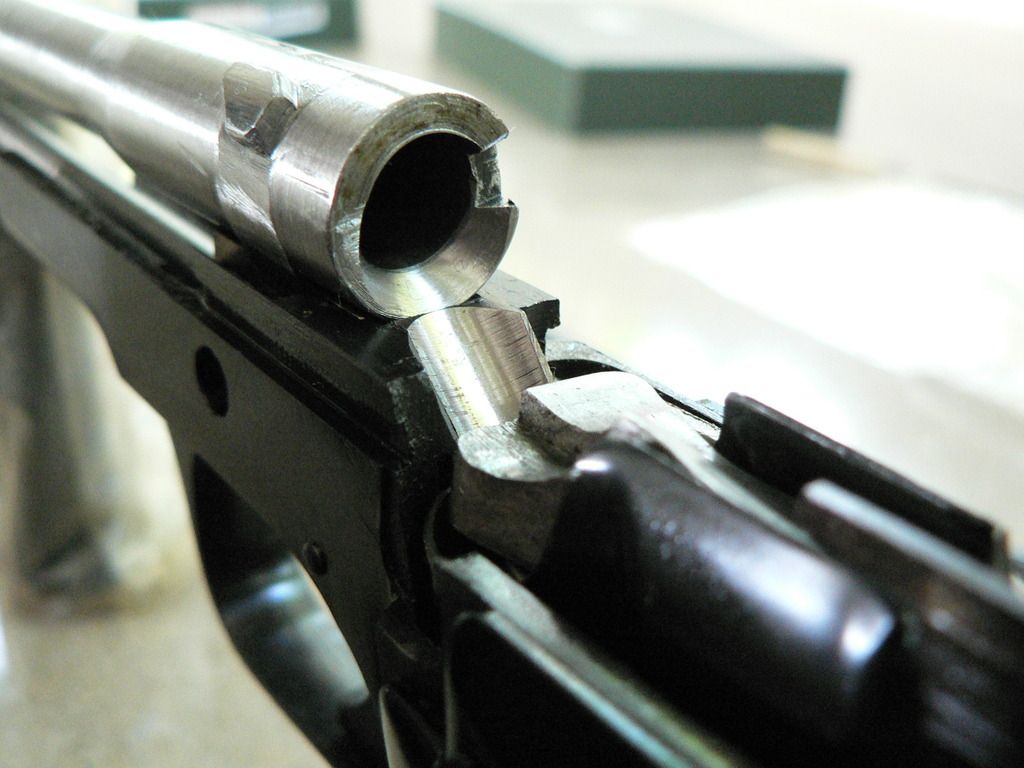 Speaking of magazines, lets take a look at one: 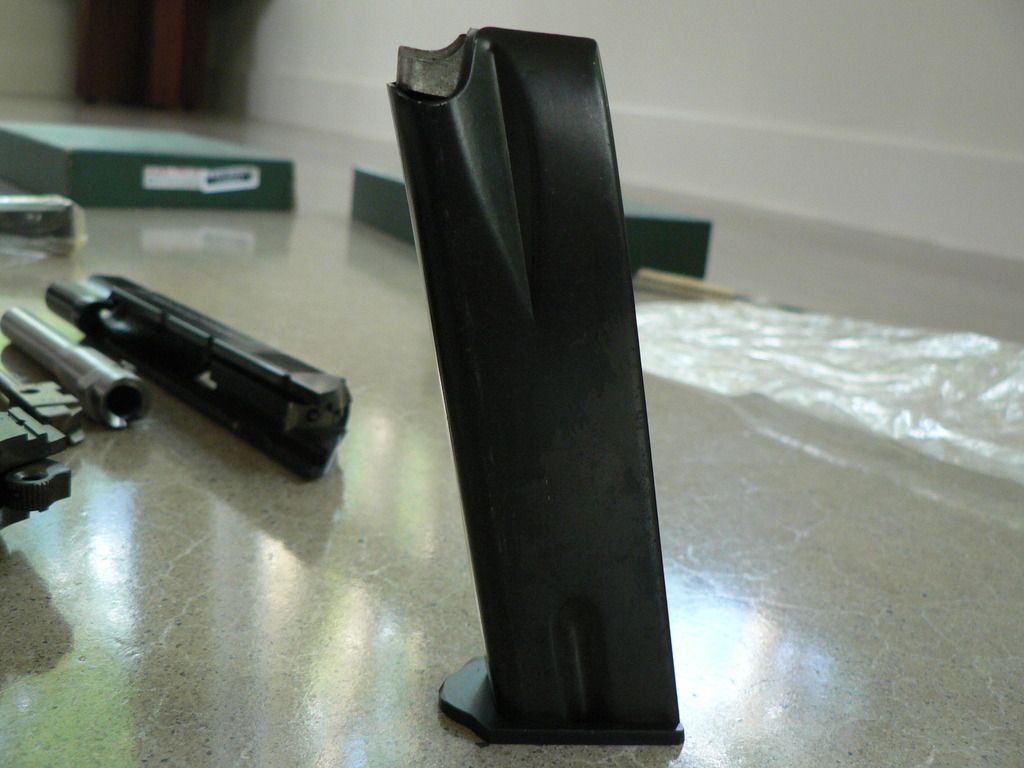 This is a typical example exhibiting a machined floor plate and cast metal follower. Very late ones have a stamped floor plate and a plastic follower as will be evidenced when we look at the Howco example. The plastic follower flies in the face of most online sources which state that ALL original magazines have metal ones. I beg to differ. Some details of the typical magazine shown above: 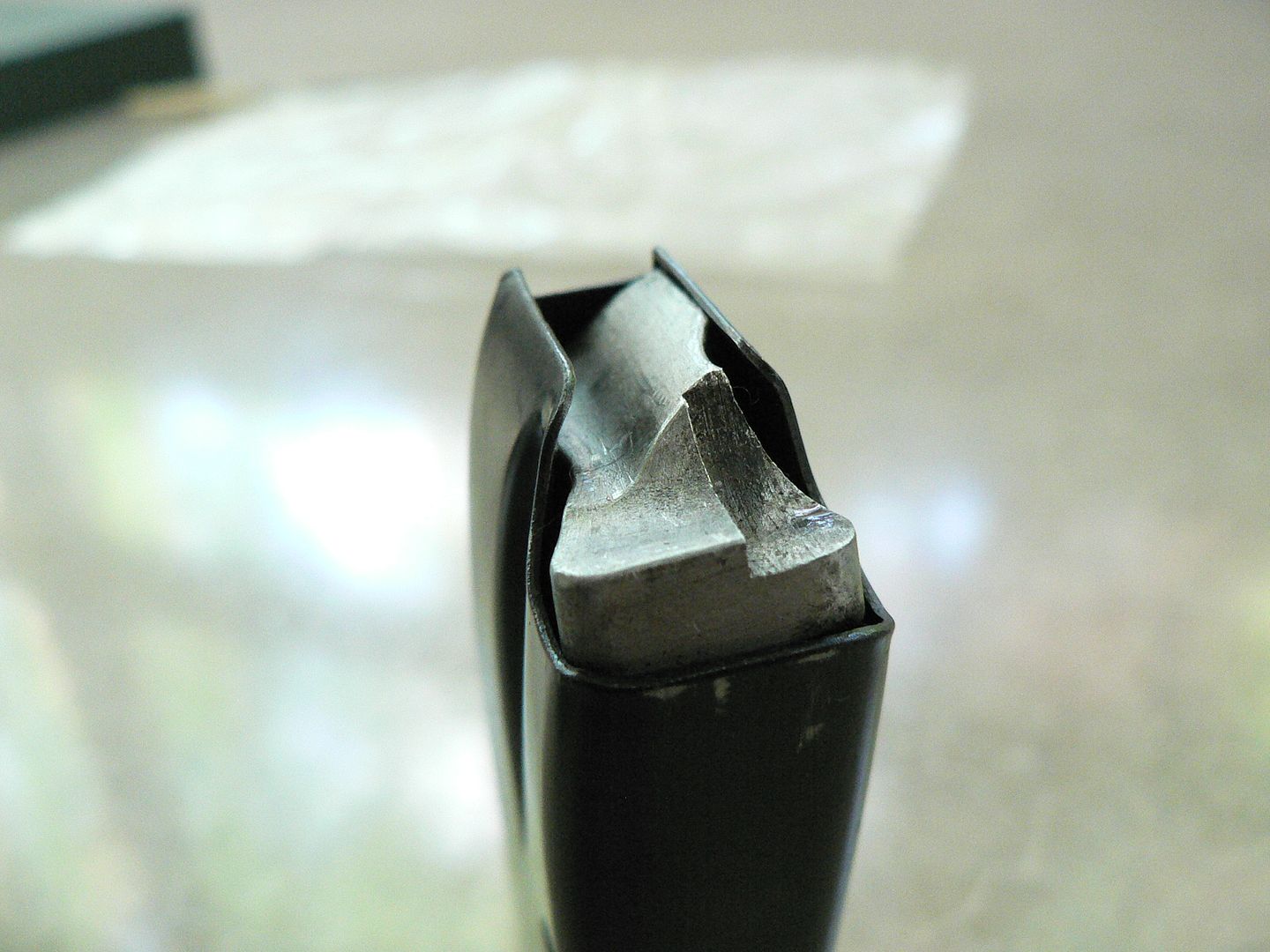  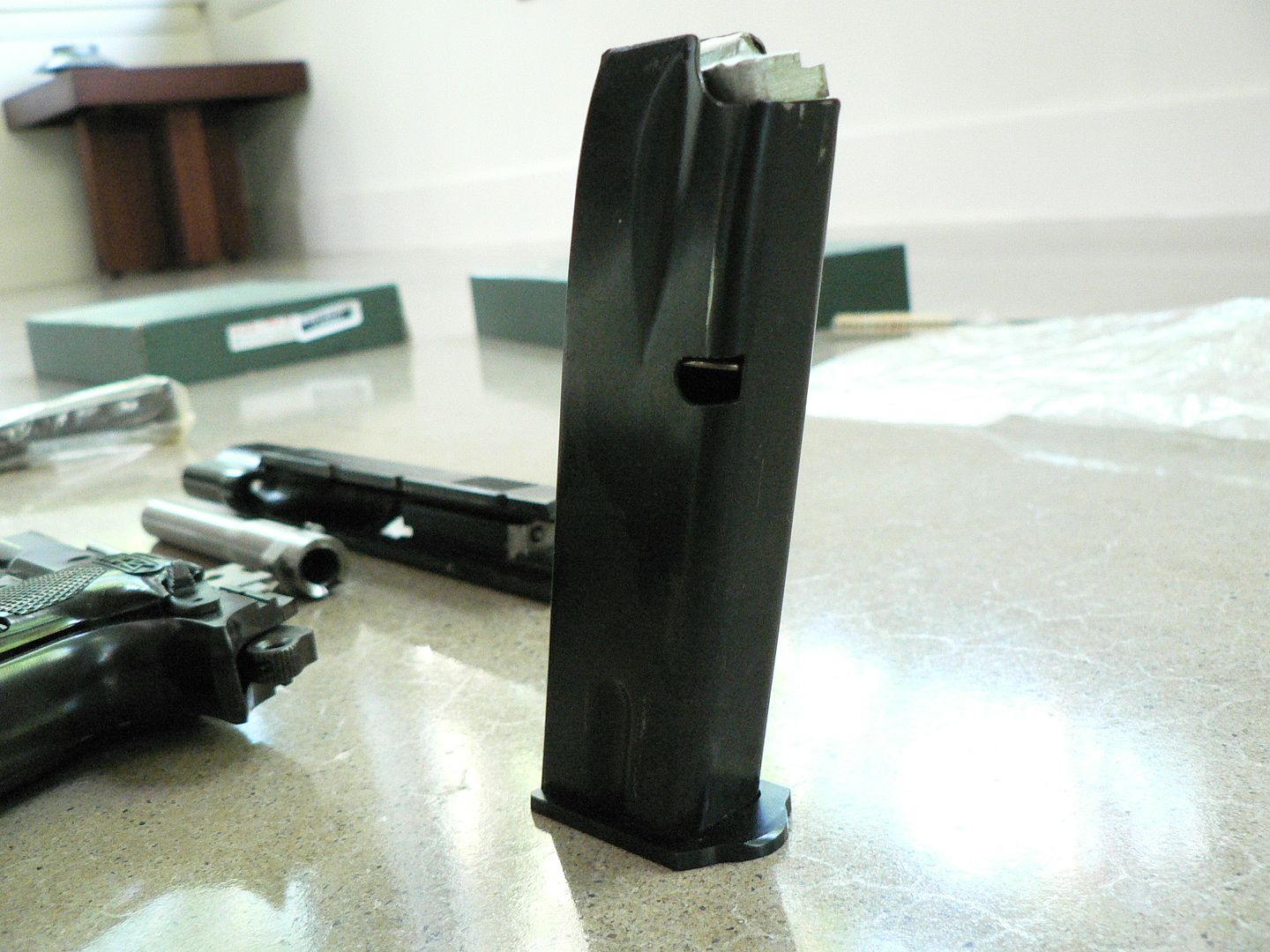 That's it for now. In the next post, we'll look at a later Howco import example. Hopefully that will happen in less then the 2 1/2 years it took me to post this one!! See you then. |
|
|

|
|
|